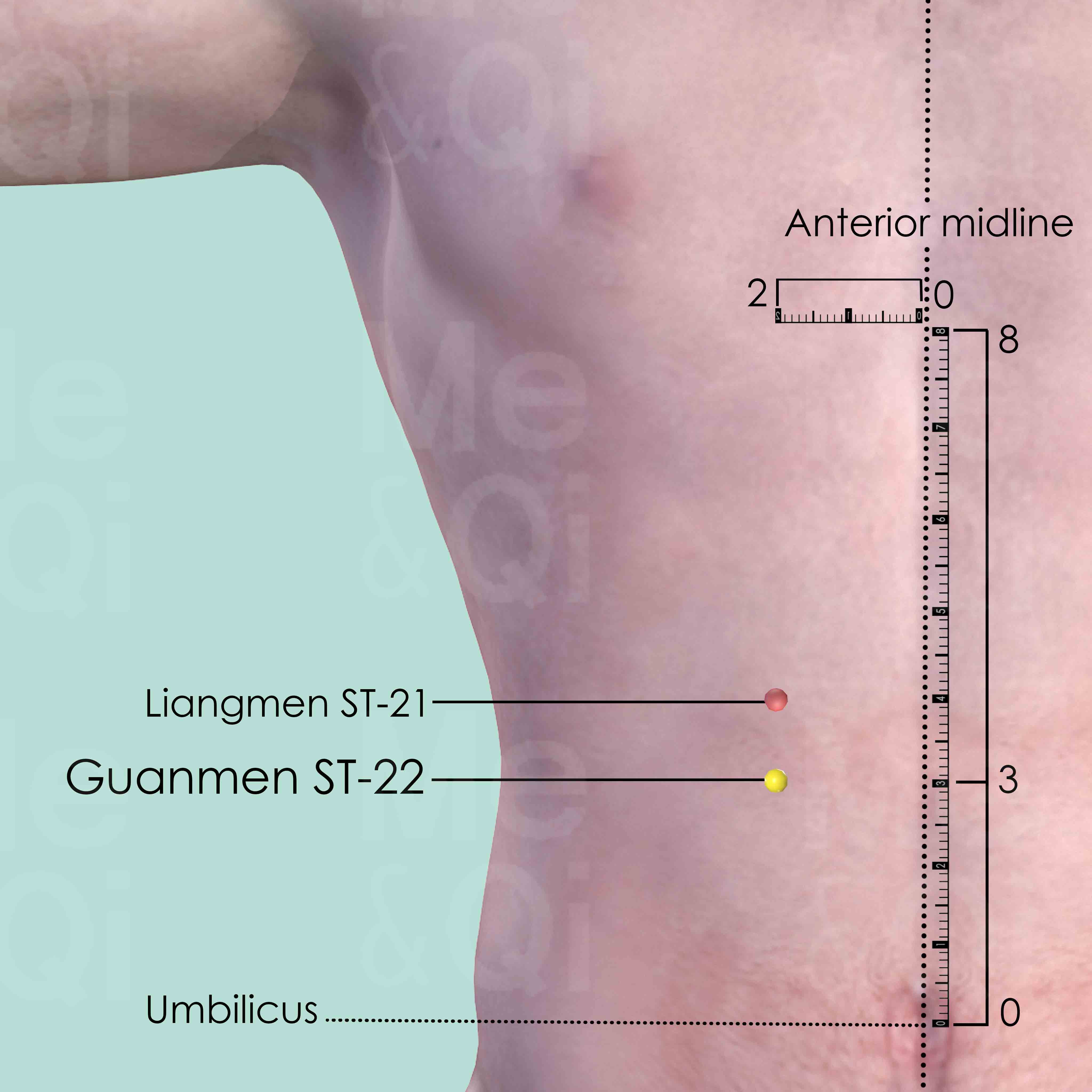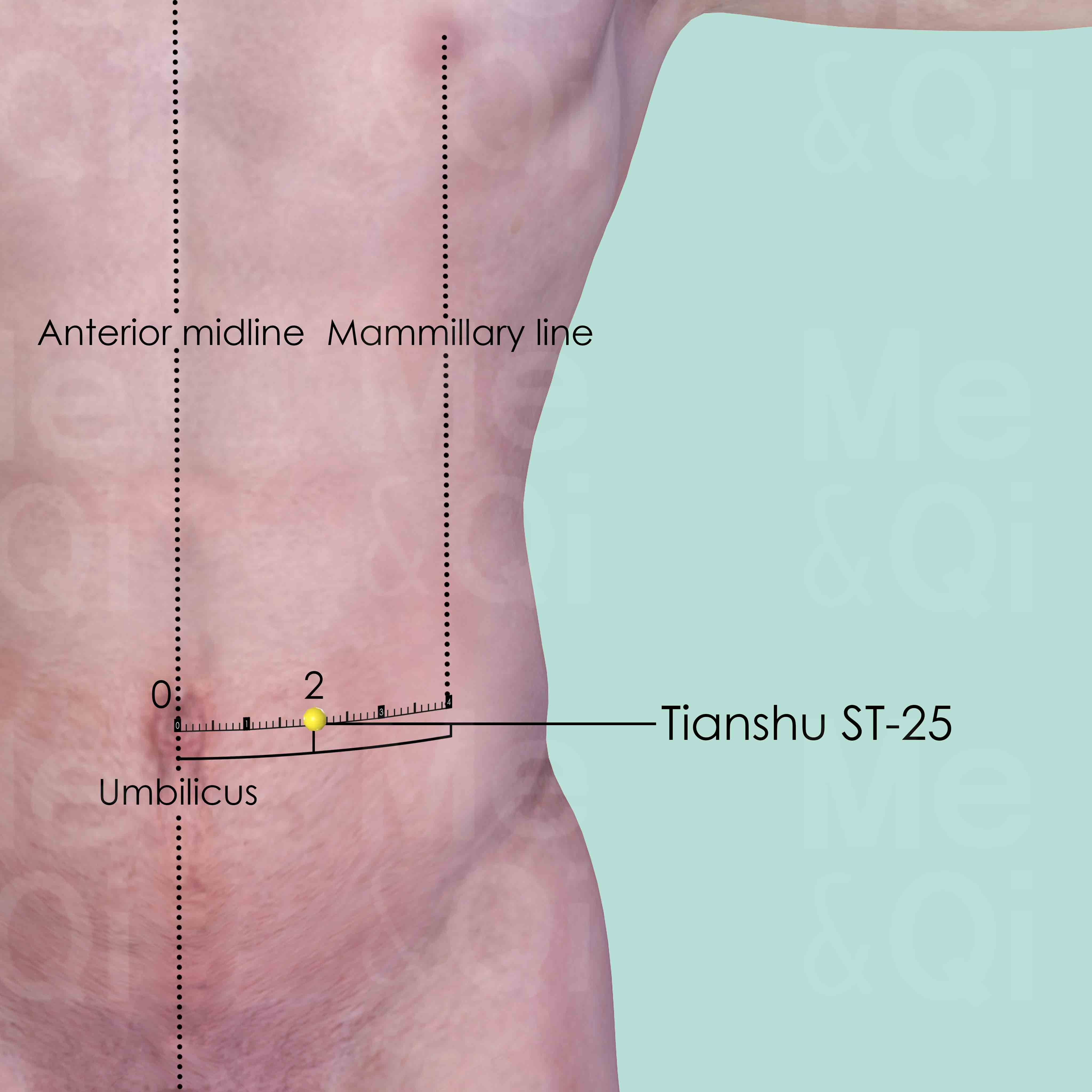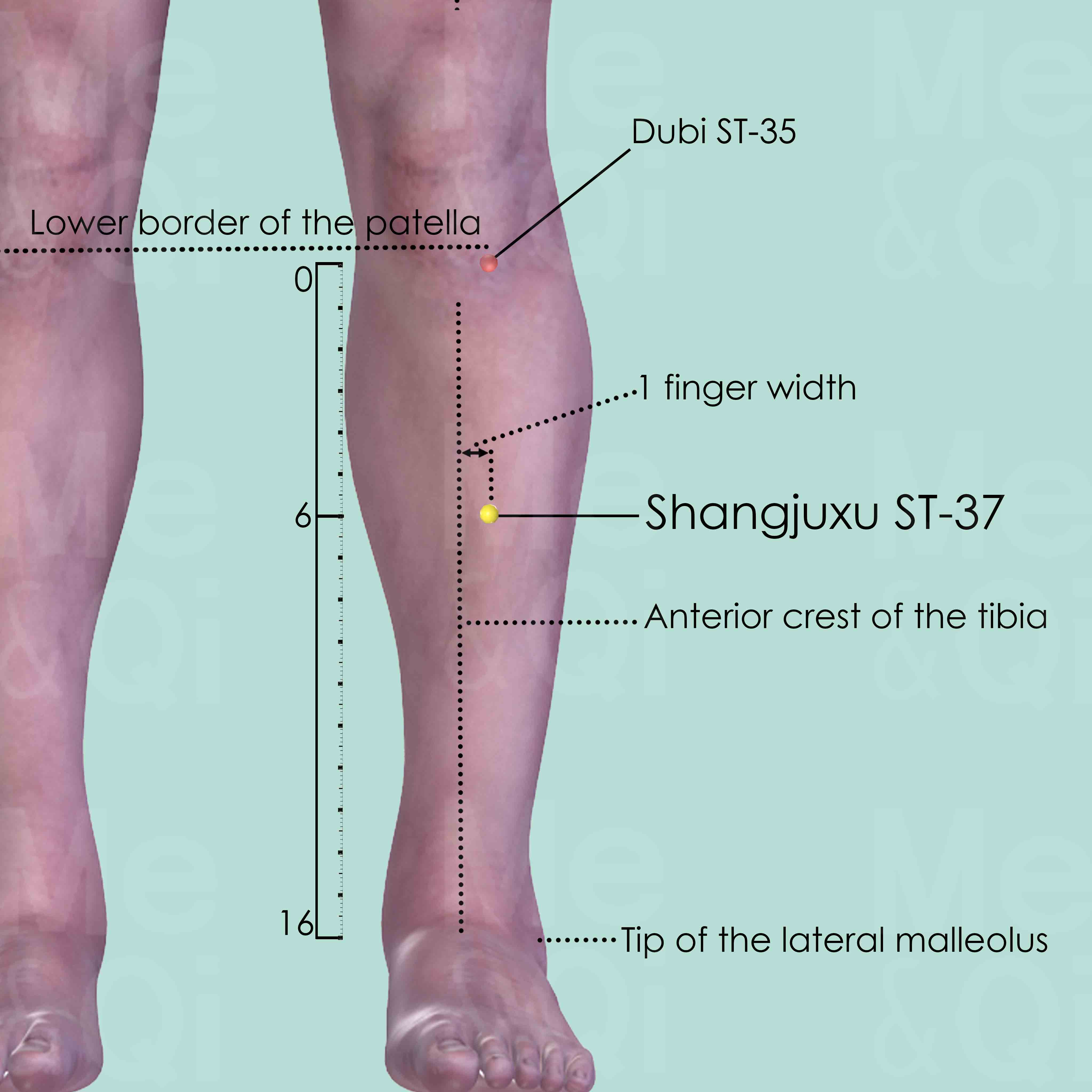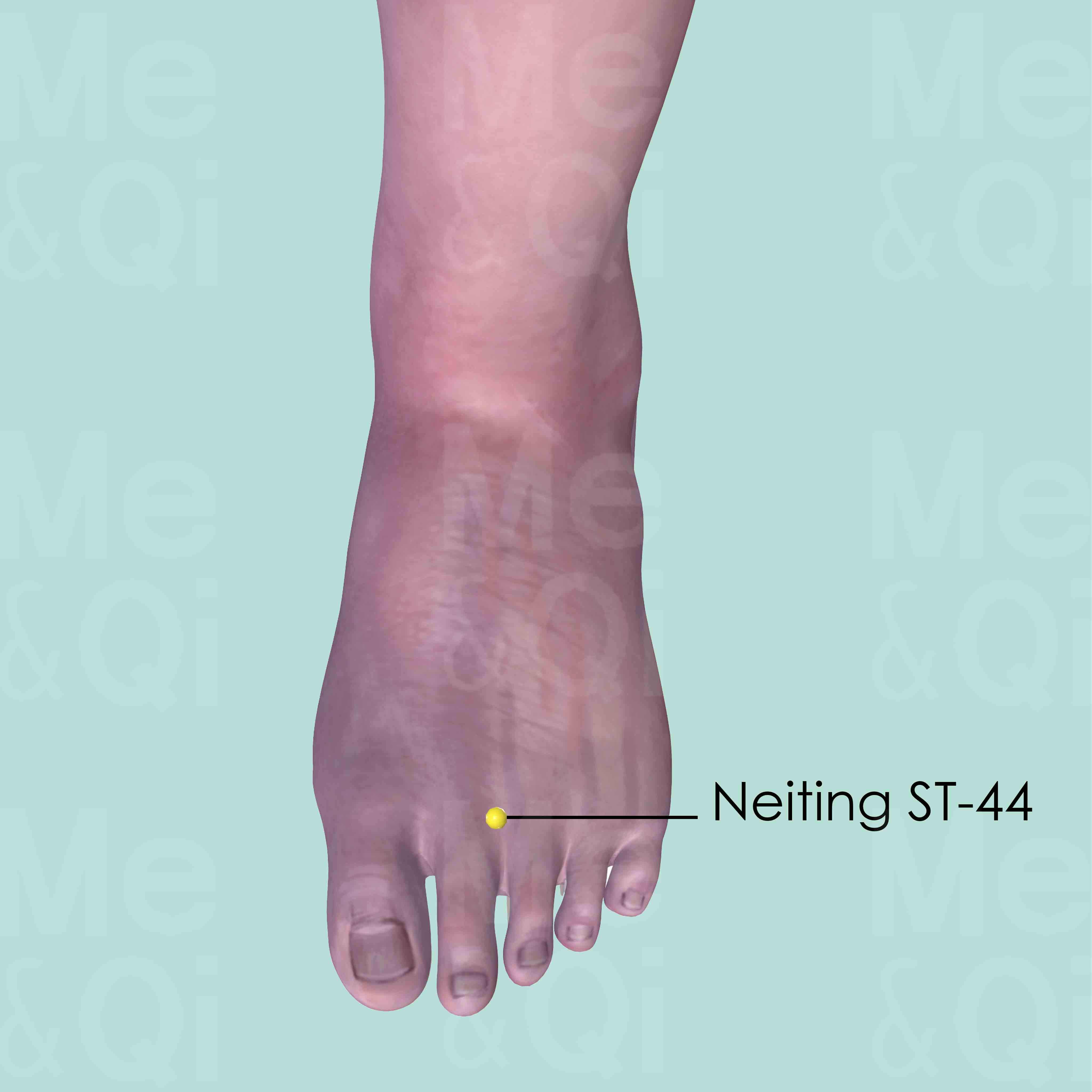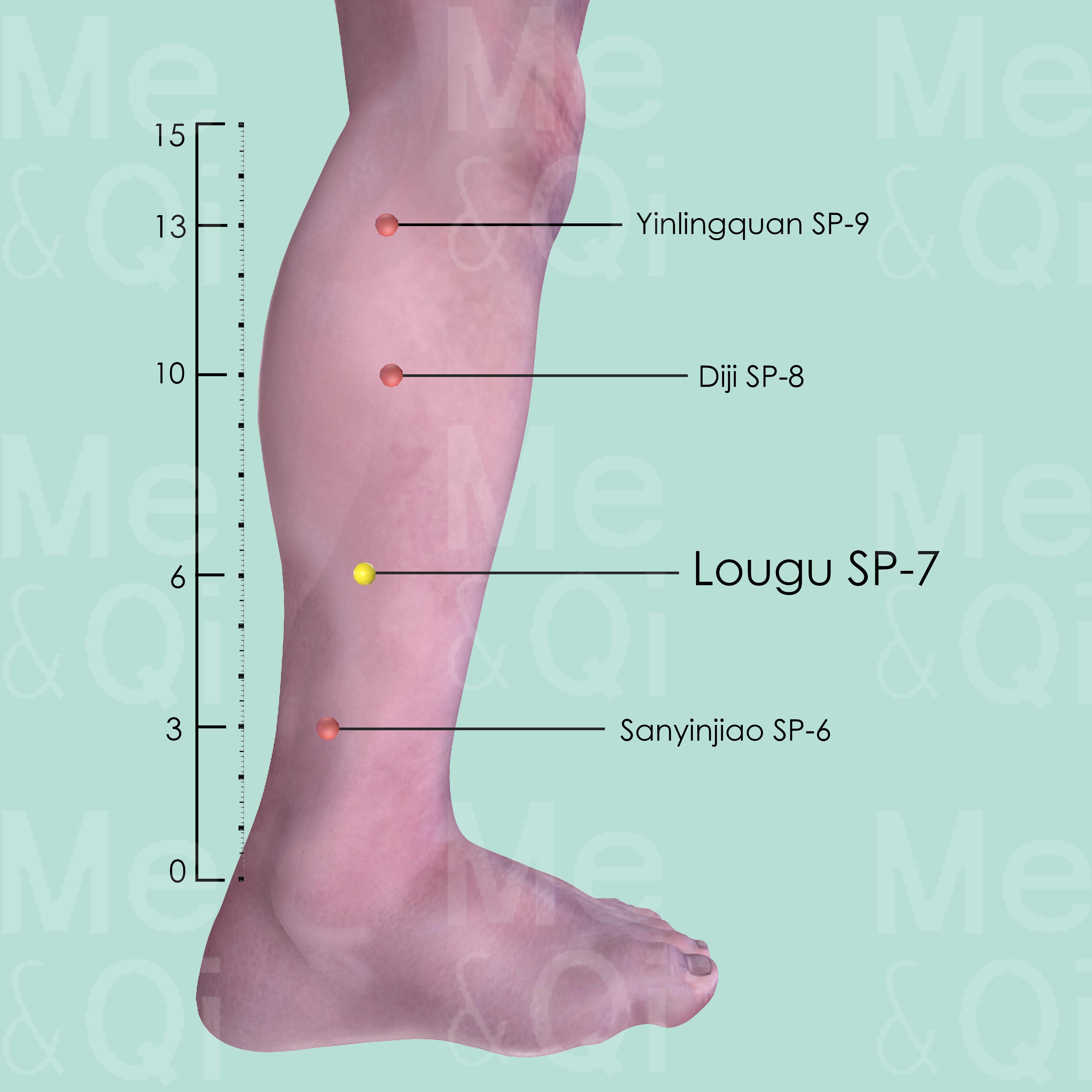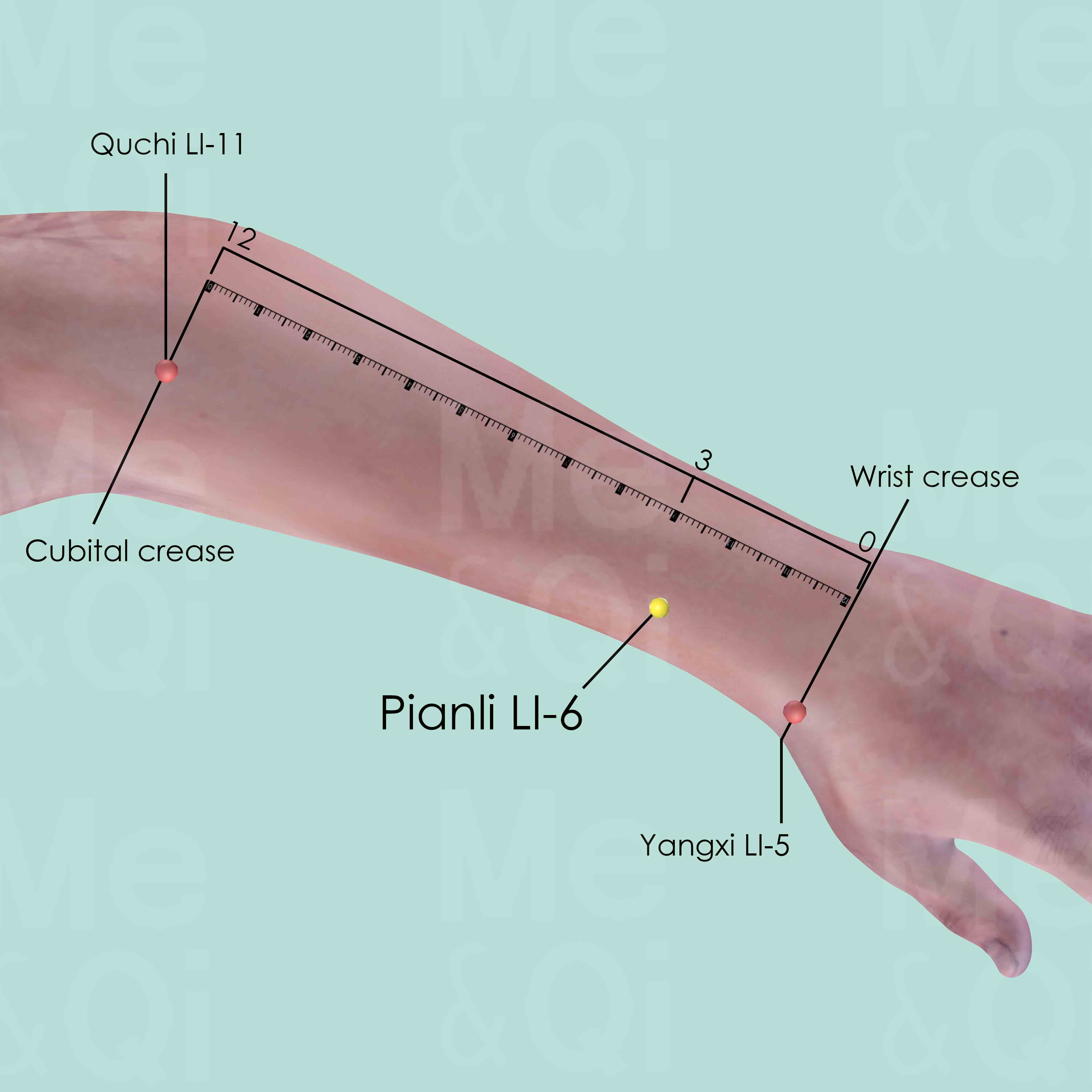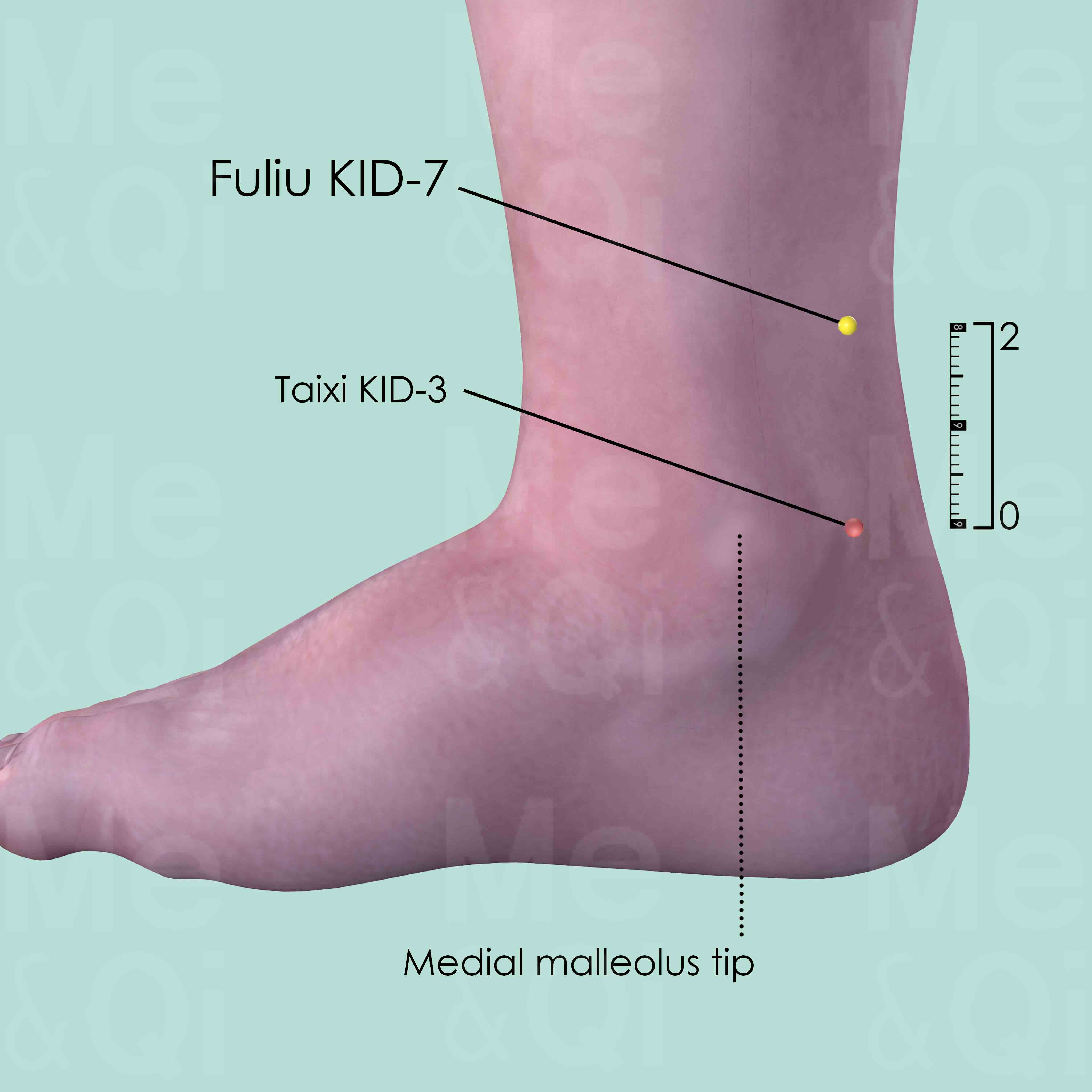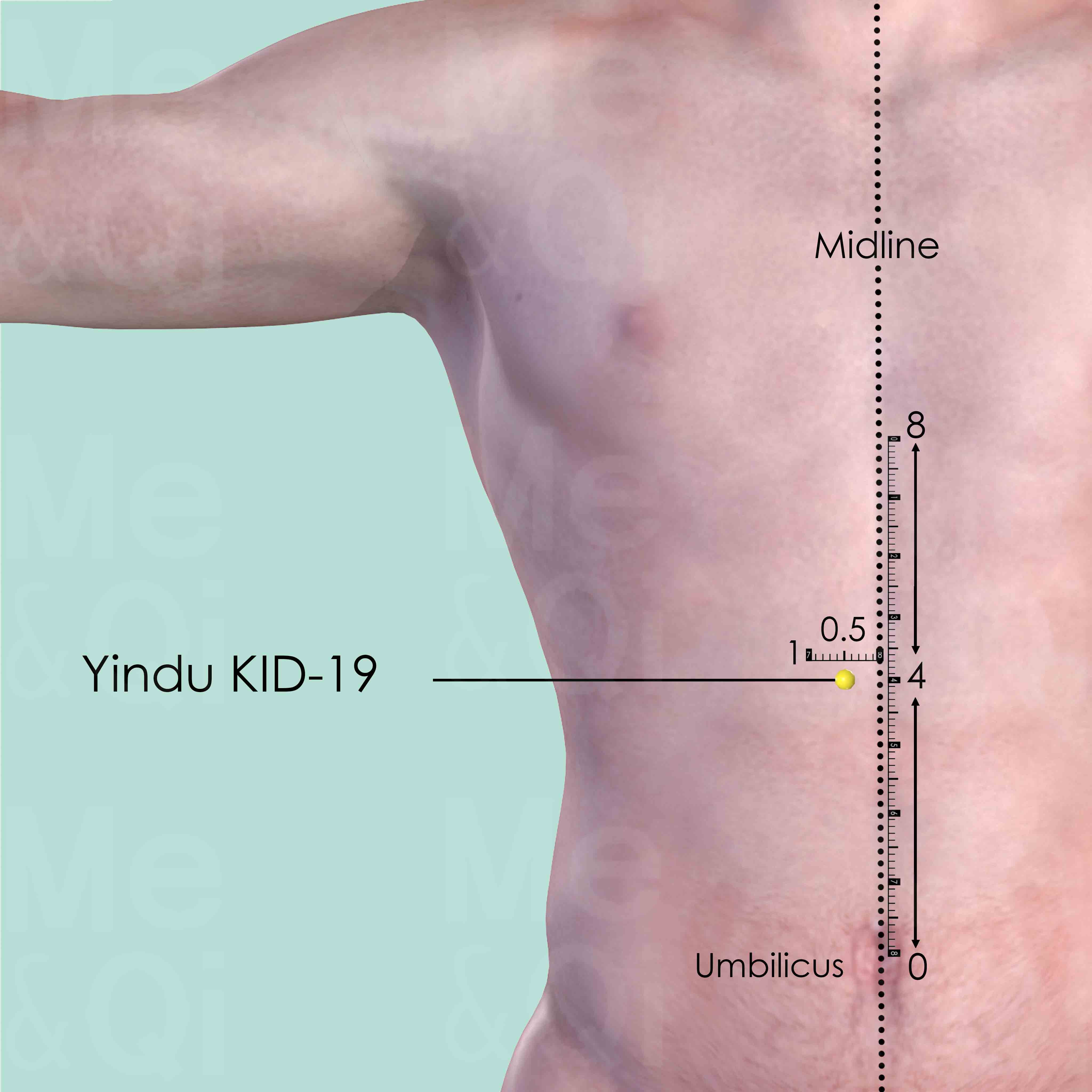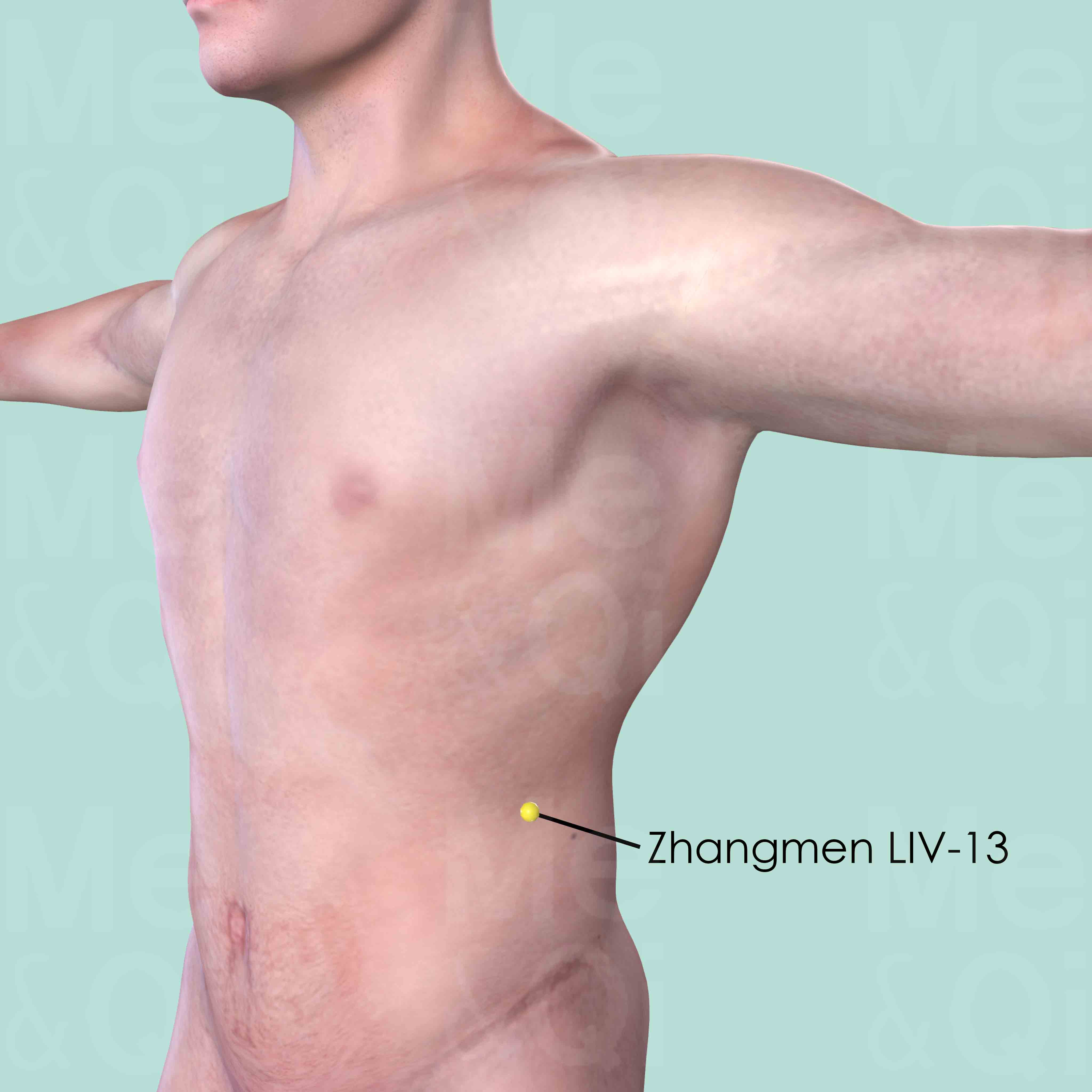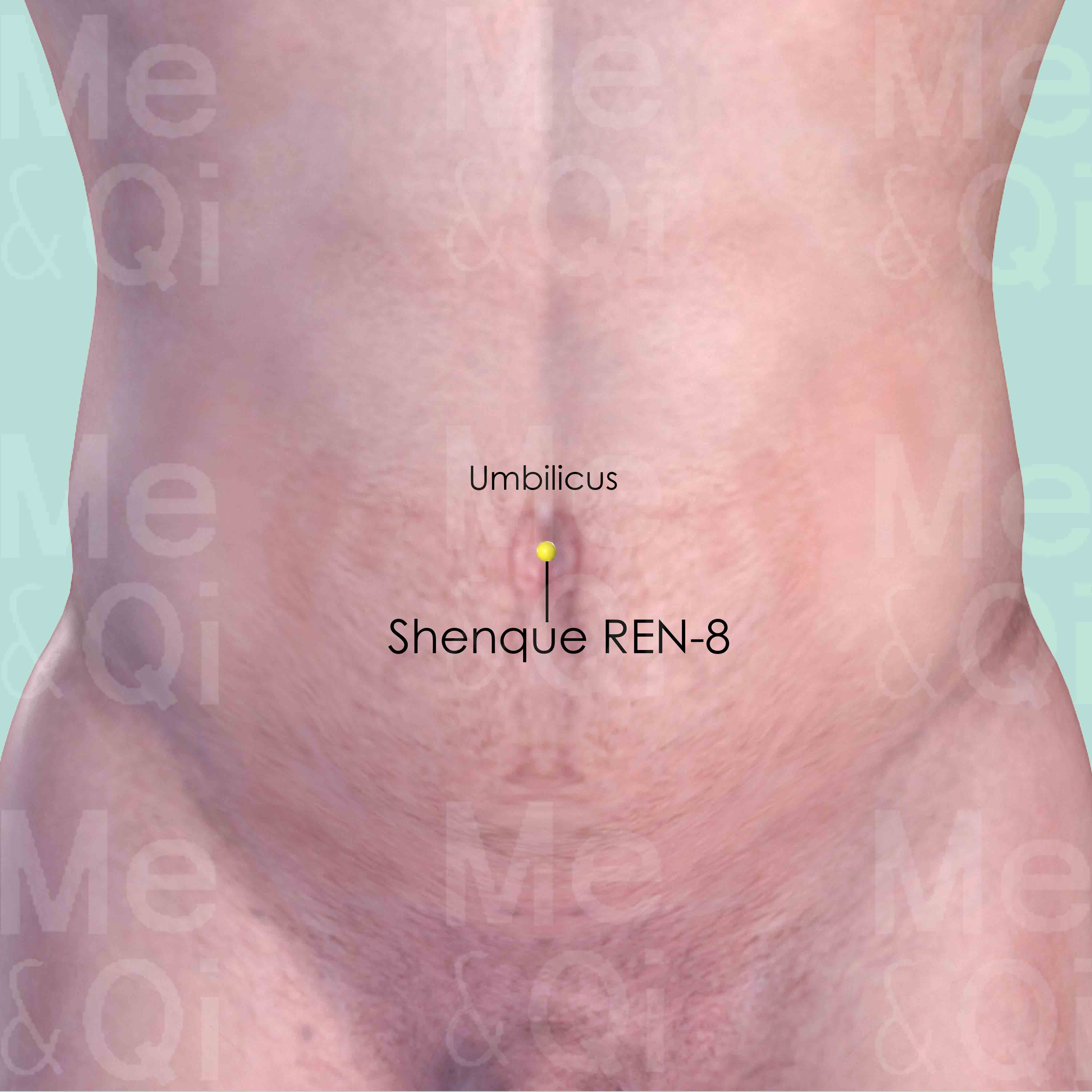Borborygmiaccording to TCM
Symptom family: Abdominal Sounds
Sub-symptom(s): Borborygmi With Diarrhea
Did you mean? Stomach Splashing Sound Stomach Churning
What is Borborygmi?
Borborygmi, a term less commonly used outside medical circles, refers to the rumbling or gurgling noises produced by the movement of fluid and gas through the intestines. These sounds, often associated with hunger but also indicative of digestive activities or disturbances, range from barely audible to surprisingly loud, creating an orchestra within the abdominal cavity that can both amuse and perplex.
TCM's Insight on Borborygmi
In the realm of Traditional Chinese Medicine (TCM), borborygmi is seen through a lens vastly different from Western medicine. It's considered a symptom of underlying imbalances within the body's energy pathways or Zang-Fu organs.
TCM interprets these sounds as indicators of Qi Stagnation, Cold invasion, or the presence of Dampness, each requiring a nuanced approach to restore harmony and silence the abdominal symphony.
Root Causes According to TCM
TCM attributes borborygmi to a variety of patterns, primarily focusing on Cold and Qi Stagnation. Large Intestine Cold, for instance, manifests as a chilling ailment with symptoms like diarrhea and abdominal pain, leading to the characteristic sounds.
Similarly, Liver Qi Stagnation presents a complex of distention, mood fluctuations, and the unmistakable sound of intestinal discontent. These patterns underscore the intricate relationship between organ systems, Qi flow, and digestive health in TCM philosophy.
TCM Remedies for Borborygmi
Addressing borborygmi in TCM involves a holistic approach, employing herbal formulas to target specific patterns. Liang Fu Wan, aimed at warming the Interior and expelling Cold, serves as a remedy for Large Intestine Cold, bringing warmth and movement back to the gut. For Qi Stagnation, Xiao Yao San harmonizes Liver-Spleen relations, easing the Qi flow and thus, the rumblings. These formulas, alongside dietary and lifestyle adjustments, form the cornerstone of TCM's strategy against borborygmi.
Acupoint Allies
TCM further employs acupuncture to quell borborygmi, pinpointing strategic acupoints along meridians tied to the Stomach, Bladder, Spleen, and Large Intestine. Points like Burong ST-19 and Gongsun SP-4 are activated to harmonize the Middle Burner and regulate Qi, respectively. This method not only aims to silence the abdominal noises but also to fortify digestive health and prevent recurrence.
In the narrative of Traditional Chinese Medicine, borborygmi transcends mere stomach rumblings to reflect deeper imbalances within. Through its holistic approaches, TCM seeks not just to silence these sounds but to restore inner harmony and digestive wellness, illustrating a profound respect for the body's signals and the wisdom encoded within.
Root Causes of Borborygmi in TCM
Explore below more details about what might cause Borborygmi according to TCM.
- By Syndrome
- By Organ
- Qi Stagnation
- Cold
- Phlegm
- Heat
- View More Causes
- Small Intestine
- Large Intestine
- Liver
- Stomach
- View More Organs
Qi Stagnation
Qi Stagnation in TCM is like having a traffic jam in your body's energy system. Qi, the vital life force that flows through your body, is supposed to move smoothly to maintain health and balance. But with Qi Stagnation, this flow gets blocked or slowed down, like cars stuck on a highway. This can lead to symptoms like feeling stressed, emotional mood swings, and physical discomfort, often described as a feeling of fullness or tightness, especially in the chest or abdomen. It's as though the body's internal energy circulation is disrupted, causing various issues. TCM sees this as an energy flow problem, different from modern medicine's focus on specific physiological processes.... see more
Qi Stagnation Patterns That Can Lead to Borborygmi
Common Symptoms: Abdominal Distention Hypochondriac Distention Chest Distension Upper Abdominal Distension Sighing Melancholia Depression Mood Swings
| Pattern Name | Relevant Symptoms | Relevant Formulas |
|---|---|---|
| Liver Qi Stagnation | Borborygmi, Hypochondriac distention, Chest distension, Upper abdominal distension, Abdominal distention, Sighing, Melancholia, Depression, Mood swings, Irregular periods, Globus sensation, Pre menstrual breast distension, Pre menstrual tension, Anxiety, Anger... see more | Xiao Yao San | Jia Wei Xiao Yao San | Yue Ju Wan | Chai Hu Shu Gan San | Yi Guan Jian |
| Small Intestine Qi Pain | Borborygmi, Lower abdominal twisting pain, Abdominal distention, Abdominal pain worsened by pressure, Excessive gas and flatulence, Abdominal pain relieved by flatulence, Testicular pain... see more | Chai Hu Shu Gan San |
Cold
In TCM "Cold" as a pattern of disharmony refers to a specific type of imbalance within the body's systems, often linked to a deficiency or weakness. It's not about feeling physically cold or having a common cold, but rather a metaphorical description of certain symptoms and underlying conditions. When a TCM practitioner says someone suffers from "Cold," it usually implies that the body's Yang energy, which is warm and active, is insufficient or overpowered by Yin energy, which is cool and passive. Symptoms of Cold in TCM can include a general feeling of coldness, cold limbs, pale complexion, low energy, slow metabolism, and a preference for warmth. ... see more
Cold Patterns That Can Lead to Borborygmi
Common Symptoms: Diarrhea Cold Extremities Abdominal Pain Clear Urination Abdominal Pain Relieved By Pressure Or Eating Craving For Hot Beverages Pale And Abudant Urination
| Pattern Name | Relevant Symptoms | Relevant Formulas |
|---|---|---|
| Large Intestine Cold | Borborygmi, Diarrhea, Abdominal pain, Clear urination, Cold extremities | Liang Fu Wan | Tao Hua Tang |
| Small Intestine Deficient and Cold | Borborygmi, Abdominal pain relieved by pressure or eating, Craving for hot beverages, Diarrhea, Pale and abudant urination, Cold extremities... see more | Xiao Jian Zhong Tang | Shen Ling Bai Zhu San |
Phlegm
In TCM "Phlegm" as a pattern of disharmony is a complex concept that extends beyond the physical manifestation of mucus. It represents a pathological factor that can disrupt the flow of Qi (vital energy) and blood, leading to various health issues. Phlegm in TCM is seen as a sticky, turbid substance arising from the body's inability to metabolize fluids properly, often due to a dysfunction of the spleen. It's not only associated with respiratory problems like cough and congestion but also with systemic issues. Symptoms can include a feeling of heaviness, mental cloudiness, dizziness, and in some cases, the formation of lumps or masses. Phlegm can even be "invisible," contributing to emotional disturbances like depression or stress. ... see more
Phlegm Patterns That Can Lead to Borborygmi
| Pattern Name | Relevant Symptoms | Relevant Formulas |
|---|---|---|
| Phlegm-Heat in the Middle Burner | Borborygmi with diarrhea, Upper abdominal focal distention, Abdominal fullness, Dry heaving, Lack of appetite, Peptic ulcer, Gastroesophageal reflux disease, Gastritis, Chronic cholecystitis, Colitis, Hepatitis... see more | Ban Xia Xie Xin Tang |
Heat
In TCM "Heat" signifies an excess of Yang energy, leading to an imbalance where heat predominates over the body's cool Yin aspects. This condition is metaphorically akin to an internal over-heating. Symptoms indicative of Heat can include feelings of warmth, fever, sweating, irritability, red face, thirst with a preference for cold drinks, and a rapid pulse. The tongue may appear red with a yellow coating. Unlike the common interpretation of heat in terms of temperature, in TCM, it represents a state of hyperactivity or inflammation in the body.... see more
Heat Patterns That Can Lead to Borborygmi
| Pattern Name | Relevant Symptoms | Relevant Formulas |
|---|---|---|
| Phlegm-Heat in the Middle Burner | Borborygmi with diarrhea, Upper abdominal focal distention, Abdominal fullness, Dry heaving, Lack of appetite, Peptic ulcer, Gastroesophageal reflux disease, Gastritis, Chronic cholecystitis, Colitis, Hepatitis... see more | Ban Xia Xie Xin Tang |
Small Intestine
In TCM the Small Intestine plays a critical role in receiving partially digested food from the Stomach and further separating the clear from the turbid, essentially distinguishing nutrients from waste. This process is vital for proper absorption and assimilation of food. The Small Intestine is also associated with clarity of judgment and decision-making. When it malfunctions or is imbalanced in TCM, it can lead to digestive issues such as abdominal pain, bloating, poor appetite, or irregular bowel movements. Additionally, a malfunctioning Small Intestine may manifest as mental confusion or difficulty in making decisions, reflecting its role in discernment and clarity in both physical and mental realms. ... see more
Small Intestine Patterns That Can Lead to Borborygmi
Common Symptoms: Abdominal Pain Relieved By Pressure Or Eating Craving For Hot Beverages Diarrhea Pale And Abudant Urination Cold Extremities Lower Abdominal Twisting Pain Abdominal Distention Abdominal Pain Worsened By Pressure
| Pattern Name | Relevant Symptoms | Relevant Formulas |
|---|---|---|
| Small Intestine Deficient and Cold | Borborygmi, Abdominal pain relieved by pressure or eating, Craving for hot beverages, Diarrhea, Pale and abudant urination, Cold extremities... see more | Xiao Jian Zhong Tang | Shen Ling Bai Zhu San |
| Small Intestine Qi Pain | Borborygmi, Lower abdominal twisting pain, Abdominal distention, Abdominal pain worsened by pressure, Excessive gas and flatulence, Abdominal pain relieved by flatulence, Testicular pain... see more | Chai Hu Shu Gan San |
Large Intestine
In TCM the Large Intestine is primarily seen as responsible for the absorption of fluids and the excretion of waste. It is closely related to the Lung in terms of energy flow and function, reflecting the interconnectedness of organ systems in TCM. When the Large Intestine malfunctions, it can lead to issues such as constipation or diarrhea, abdominal pain, and an inability to let go of emotional waste, like holding onto grief or stress. This is in line with the TCM view that the physical and emotional aspects of health are deeply connected. An imbalanced Large Intestine can also manifest as skin problems, signifying the organ’s role in eliminating toxins and maintaining balance in the body’s internal environment.... see more
Large Intestine Patterns That Can Lead to Borborygmi
| Pattern Name | Relevant Symptoms | Relevant Formulas |
|---|---|---|
| Large Intestine Cold | Borborygmi, Diarrhea, Abdominal pain, Clear urination, Cold extremities | Liang Fu Wan | Tao Hua Tang |
Liver
In TCM the Liver is viewed as the organ responsible for the smooth flow of Qi, Blood, and emotions throughout the body. It plays a key role in regulating mood, storing blood, supporting digestion, and ensuring the health of tendons and eyes. When the Liver malfunctions or is imbalanced in TCM, it can lead to a range of issues such as irritability, mood swings, menstrual irregularities, eye problems, and muscular stiffness or pain. A malfunctioning Liver in TCM reflects not only physical disturbances but also emotional and mental disharmony, emphasizing the holistic approach of TCM in addressing health and wellness.... see more
Liver Patterns That Can Lead to Borborygmi
| Pattern Name | Relevant Symptoms | Relevant Formulas |
|---|---|---|
| Liver Qi Stagnation | Borborygmi, Hypochondriac distention, Chest distension, Upper abdominal distension, Abdominal distention, Sighing, Melancholia, Depression, Mood swings, Irregular periods, Globus sensation, Pre menstrual breast distension, Pre menstrual tension, Anxiety, Anger... see more | Xiao Yao San | Jia Wei Xiao Yao San | Yue Ju Wan | Chai Hu Shu Gan San | Yi Guan Jian |
Stomach
In TCM the Stomach is regarded as the "sea of nourishment," pivotal for digesting food and transforming it into Qi and blood. It works closely with the Spleen to distribute these essential nutrients throughout the body. When the Stomach is out of balance or malfunctions in TCM, it often leads to digestive problems such as bloating, nausea, vomiting, poor appetite, or a feeling of fullness. There may also be issues like acid reflux or a sour taste in the mouth. Emotionally, an imbalanced Stomach can contribute to excessive worry and overthinking, reflecting the TCM belief that physical and emotional well-being are deeply interconnected.... see more
Stomach Patterns That Can Lead to Borborygmi
| Pattern Name | Relevant Symptoms | Relevant Formulas |
|---|---|---|
| Phlegm-Heat in the Middle Burner | Borborygmi with diarrhea, Upper abdominal focal distention, Abdominal fullness, Dry heaving, Lack of appetite, Peptic ulcer, Gastroesophageal reflux disease, Gastritis, Chronic cholecystitis, Colitis, Hepatitis... see more | Ban Xia Xie Xin Tang |
TCM Herbal Formulas for Borborygmi
Explore below some TCM herbal formulas used to address borborygmi, organized by cause and by formula type.
- By Cause
- By Formula Type
- Qi Stagnation
- Cold
- Phlegm
- Heat
- View More Causes
- Formulas that promote qi movement
- Formulas that harmonize liver-Spleen
- Formulas that bind up intestines and secure abandoned conditions
- Formulas that nourish yin and tonify
- Formulas that warm the middle and dispel cold
- Formulas that tonify qi
- Formulas that harmonize stomach-Intestines
Top Formula for Qi Stagnation:
Chai Hu Shu Gan San
Suitable for Qi Stagnation patterns that may cause borborygmi, such as Liver Qi Stagnation or Small Intestine Qi Pain
Learn moreAll Formulas Recommended for Borborygmi Caused by Qi Stagnation
| Formula | Patterns Suitable For |
|---|---|
| Chai Hu Shu Gan San | Liver Qi Stagnation, Small Intestine Qi Pain |
| Xiao Yao San | Liver Qi Stagnation |
| Jia Wei Xiao Yao San | Liver Qi Stagnation |
| Yue Ju Wan | Liver Qi Stagnation |
| Yi Guan Jian | Liver Qi Stagnation |
Top Formula for Cold:
Liang Fu Wan
Suitable for Cold patterns that may cause borborygmi, such as Large Intestine Cold
Learn moreAll Formulas Recommended for Borborygmi Caused by Cold
| Formula | Patterns Suitable For |
|---|---|
| Liang Fu Wan | Large Intestine Cold |
| Tao Hua Tang | Large Intestine Cold |
| Xiao Jian Zhong Tang | Small Intestine Deficient and Cold |
| Shen Ling Bai Zhu San | Small Intestine Deficient and Cold |
Top Formula for Phlegm:
Ban Xia Xie Xin Tang
Suitable for Phlegm patterns that may cause borborygmi, such as Phlegm-Heat in the Middle Burner
Learn moreTop Formula for Heat:
Ban Xia Xie Xin Tang
Suitable for Heat patterns that may cause borborygmi, such as Phlegm-Heat in the Middle Burner
Learn moreFormulas that promote Qi movement
These formulas are suitable for some borborygmi-causing patterns like Liver Qi Stagnation or Small Intestine Qi Pain.
One such formula is Chai Hu Shu Gan San, with bupleurum root as a key herb.
Other formulas of this category are listed in the table below.
All "formulas that promote qi movement" recommended for borborygmi
| Formula | Patterns Suitable For (if applicable) |
|---|---|
| Chai Hu Shu Gan San | Liver Qi Stagnation, Small Intestine Qi Pain |
| Liang Fu Wan | Large Intestine Cold |
| Yue Ju Wan | Liver Qi Stagnation |
Formulas that harmonize Liver-Spleen
These formulas are suitable for some borborygmi-causing patterns like Liver Qi Stagnation.
One such formula is Xiao Yao San, with bupleurum root as a key herb.
Other formulas of this category are listed in the table below.
All "formulas that harmonize liver-Spleen" recommended for borborygmi
| Formula | Patterns Suitable For (if applicable) |
|---|---|
| Xiao Yao San | Liver Qi Stagnation |
| Jia Wei Xiao Yao San | Liver Qi Stagnation |
Formulas that bind up Intestines and secure abandoned conditions
These formulas are suitable for some borborygmi-causing patterns like Large Intestine Cold.
One such formula is Tao Hua Tang, with red halloysite as a key herb.
Formulas that nourish Yin and tonify
These formulas are suitable for some borborygmi-causing patterns like Liver Qi Stagnation.
One such formula is Yi Guan Jian
Formulas that warm the middle and dispel Cold
These formulas are suitable for some borborygmi-causing patterns like Small Intestine Deficient and Cold.
One such formula is Xiao Jian Zhong Tang, with maltose as a key herb.
Formulas that tonify Qi
These formulas are suitable for some borborygmi-causing patterns like Small Intestine Deficient and Cold.
One such formula is Shen Ling Bai Zhu San, with ginseng as a key herb.
Formulas that harmonize Stomach-Intestines
These formulas are suitable for some borborygmi-causing patterns like Phlegm-Heat in the Middle Burner.
One such formula is Ban Xia Xie Xin Tang, with goldthread rhizome as a key herb.
Acupoints for Borborygmi
Explore below some acupoints used to address borborygmi, organized by meridian.
- By Meridian
- Stomach Channel
- Bladder Channel
- Spleen Channel
- Large Intestine Channel
- Kidney Channel
- Liver Channel
- Gall Bladder Channel
- Directing Vessel
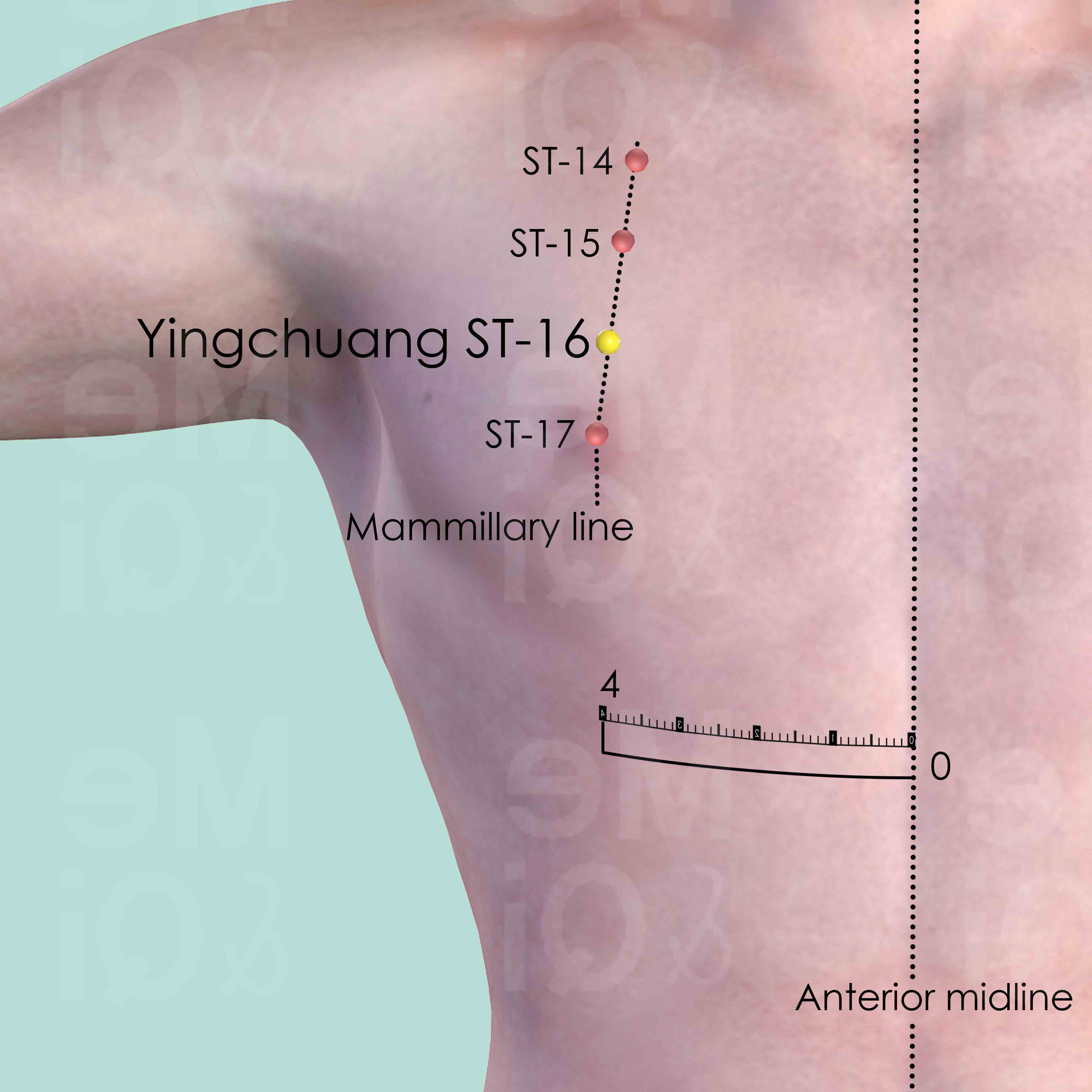
Yingchuang ST-16
In the 3nd intercostal space, on the mammillary line, 4 cun lateral to the anterior midline.
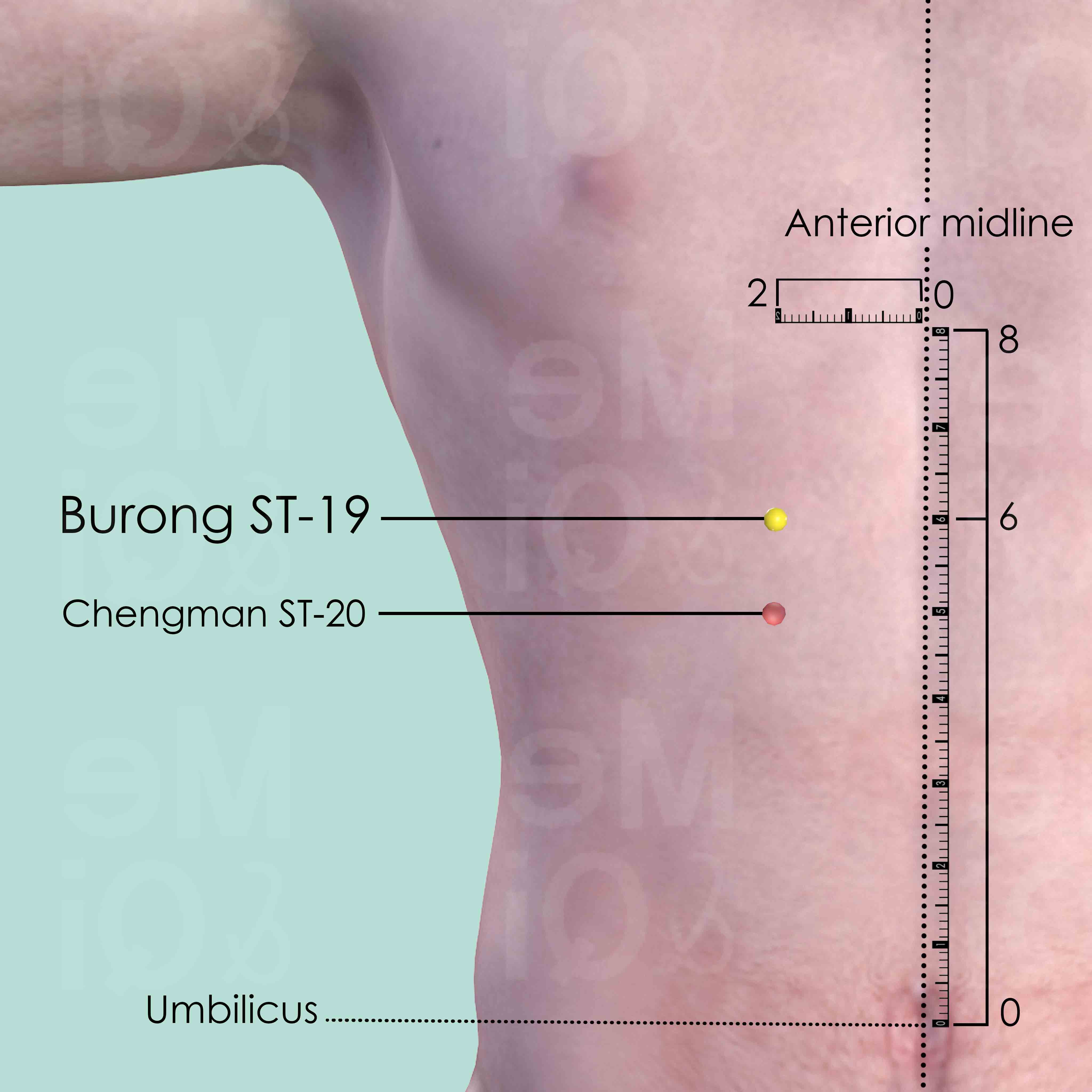
Burong ST-19
2 cun below the sternocostal angel and 6 cun above the umbilicus, 2 cun lateral to the anterior midline.
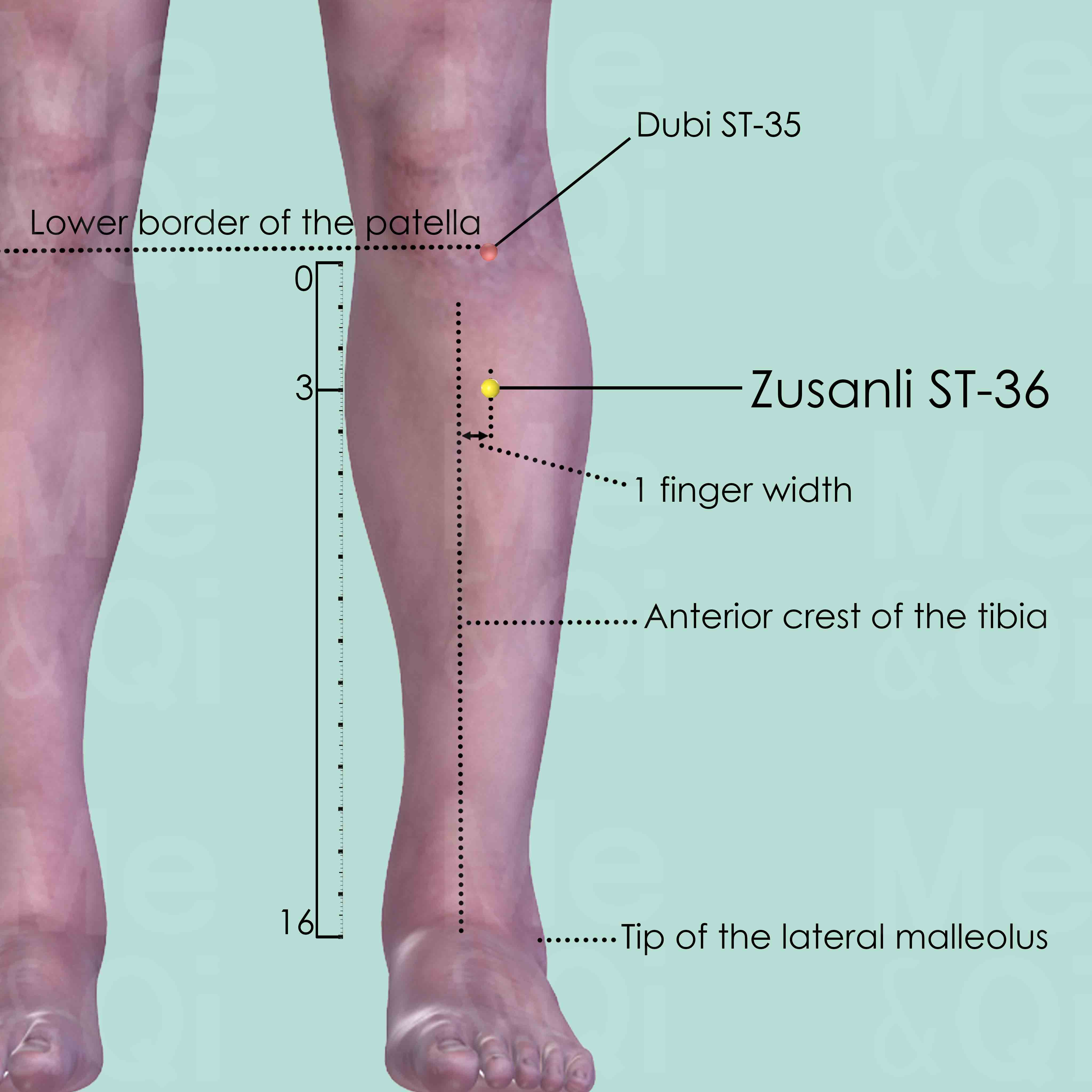
Zusanli ST-36
3 cun below Dubi ST-35, one finger breadth lateral to the anterior crest of the tibia, on the tibialis anterior muscle.
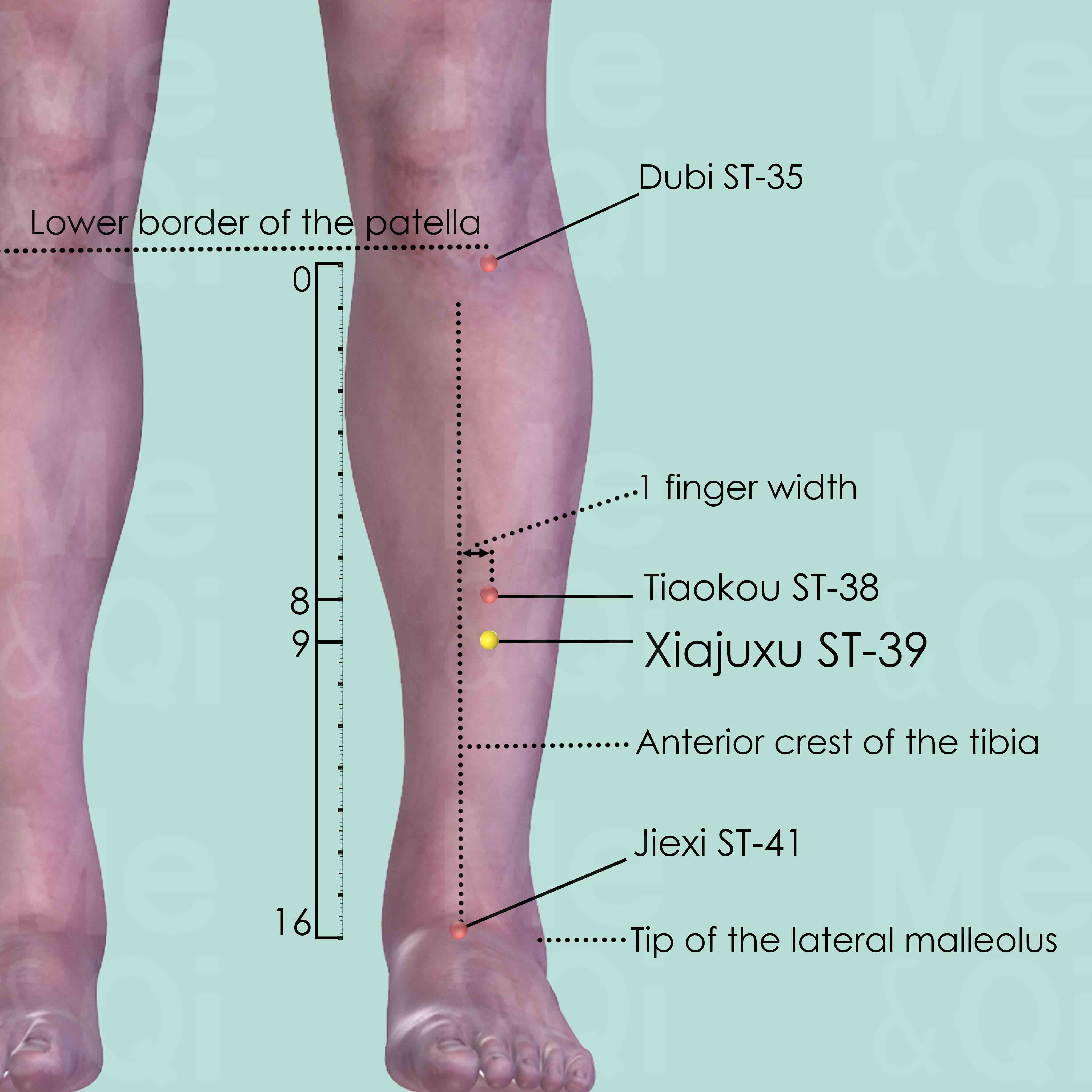
Xiajuxu ST-39
9 cun below Dubi ST-35, about one middle finger-width lateral to the anterior crest of the tibia.
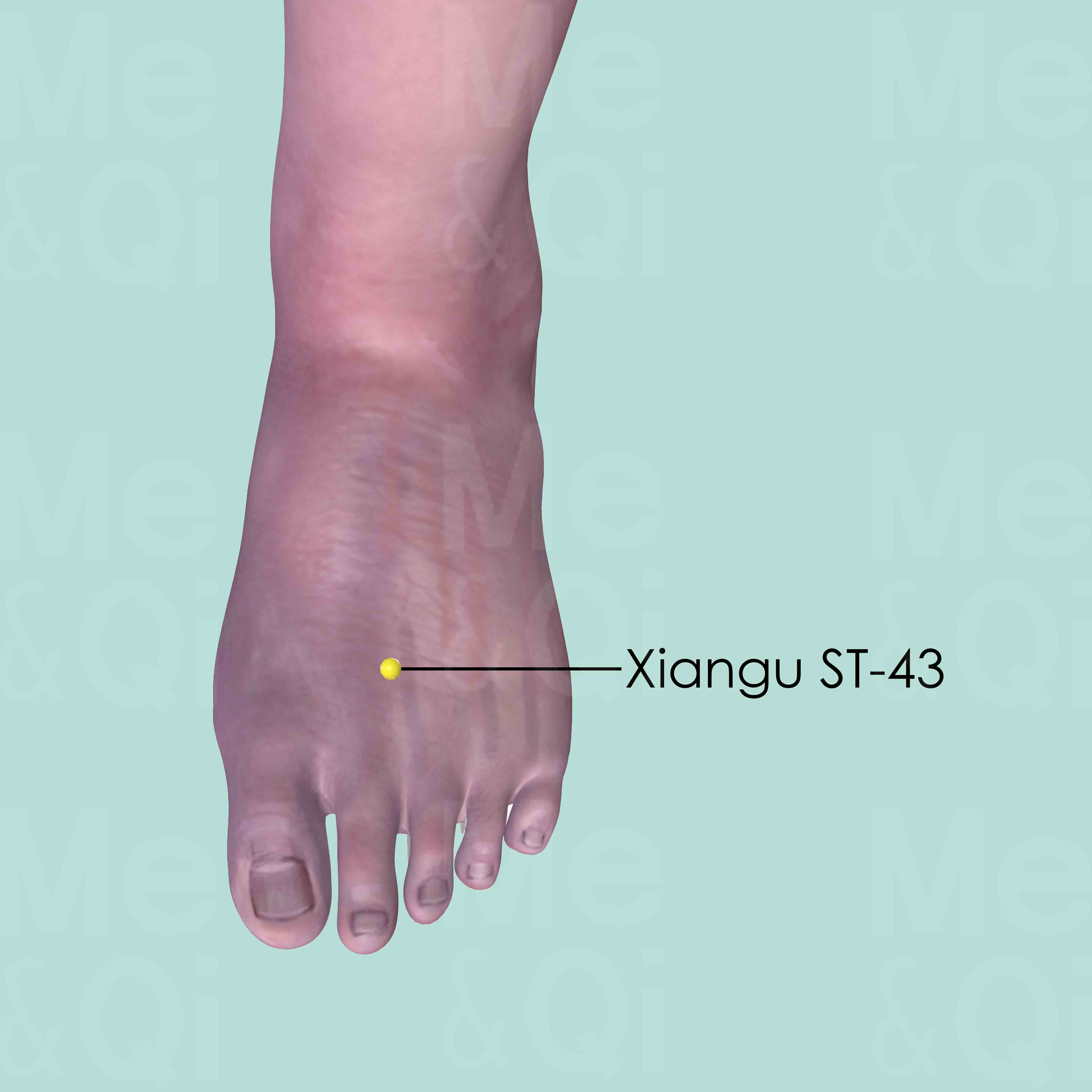
Xiangu ST-43
On the dorsum of the foot, in the depression between the 2nd and 3rd metatarsal bones, at the level of the junction of the shafts and the heads of these metatarsal bones.
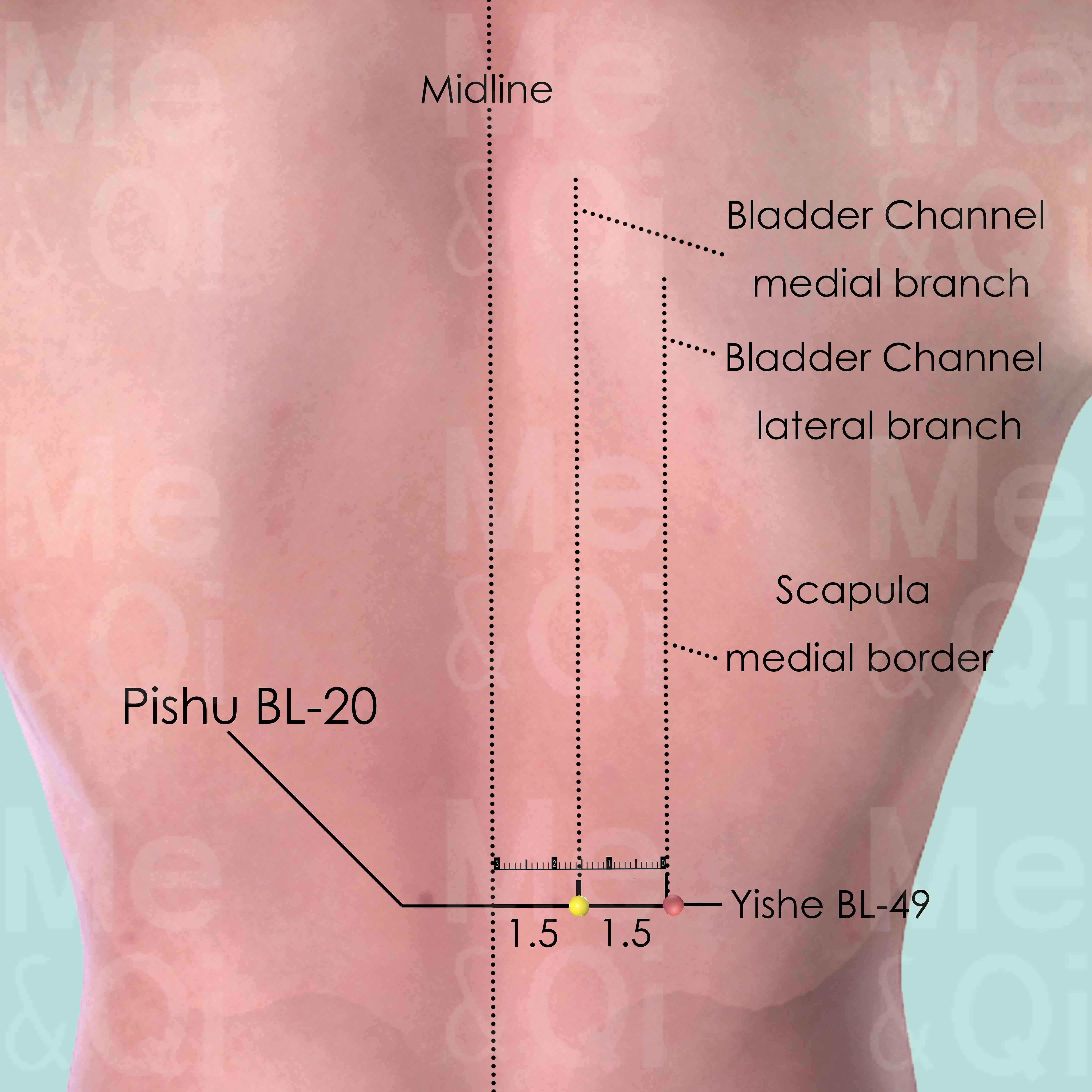
Pishu BL-20
1.5 cun lateral to the lower border of the spinous process of the 11th thoracic vertebra (T11).
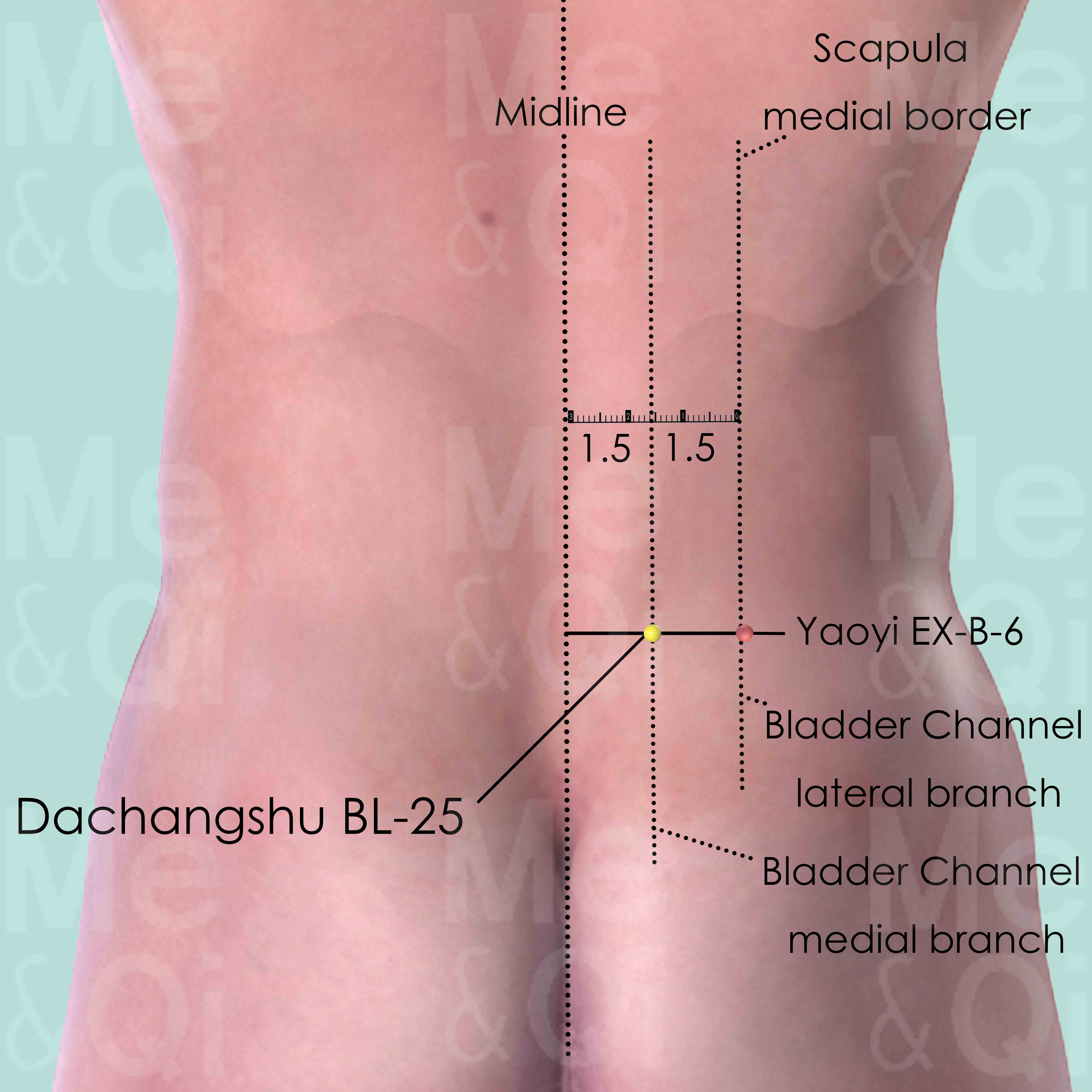
Dachangshu BL-25
1.5 cun lateral to the lower border of the spinous process of the 4th lumber vertebra (L4).
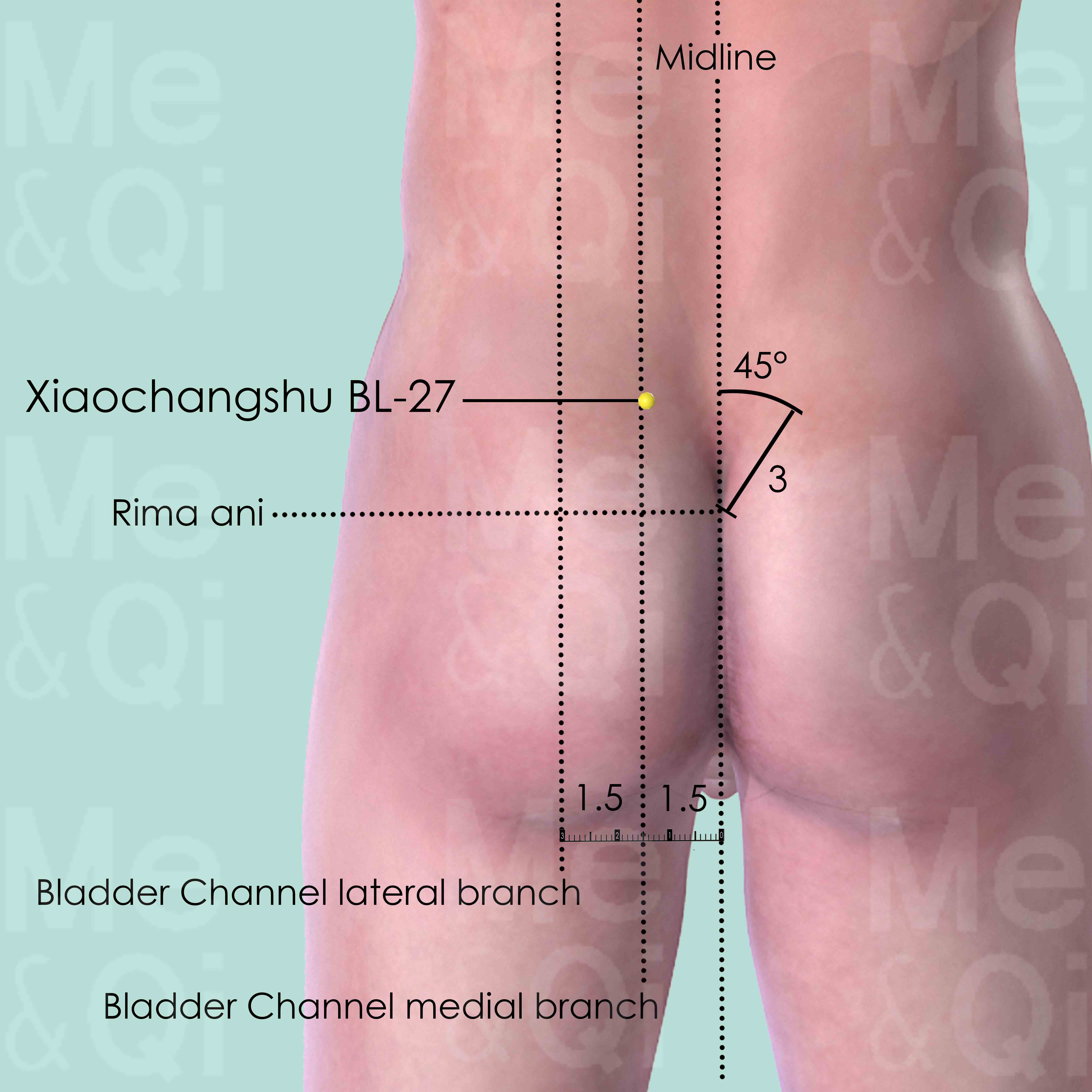
Xiaochangshu BL-27
At the level of the 1st posterior sacral foramen, 1.5 cun lateral to the posterior midline.
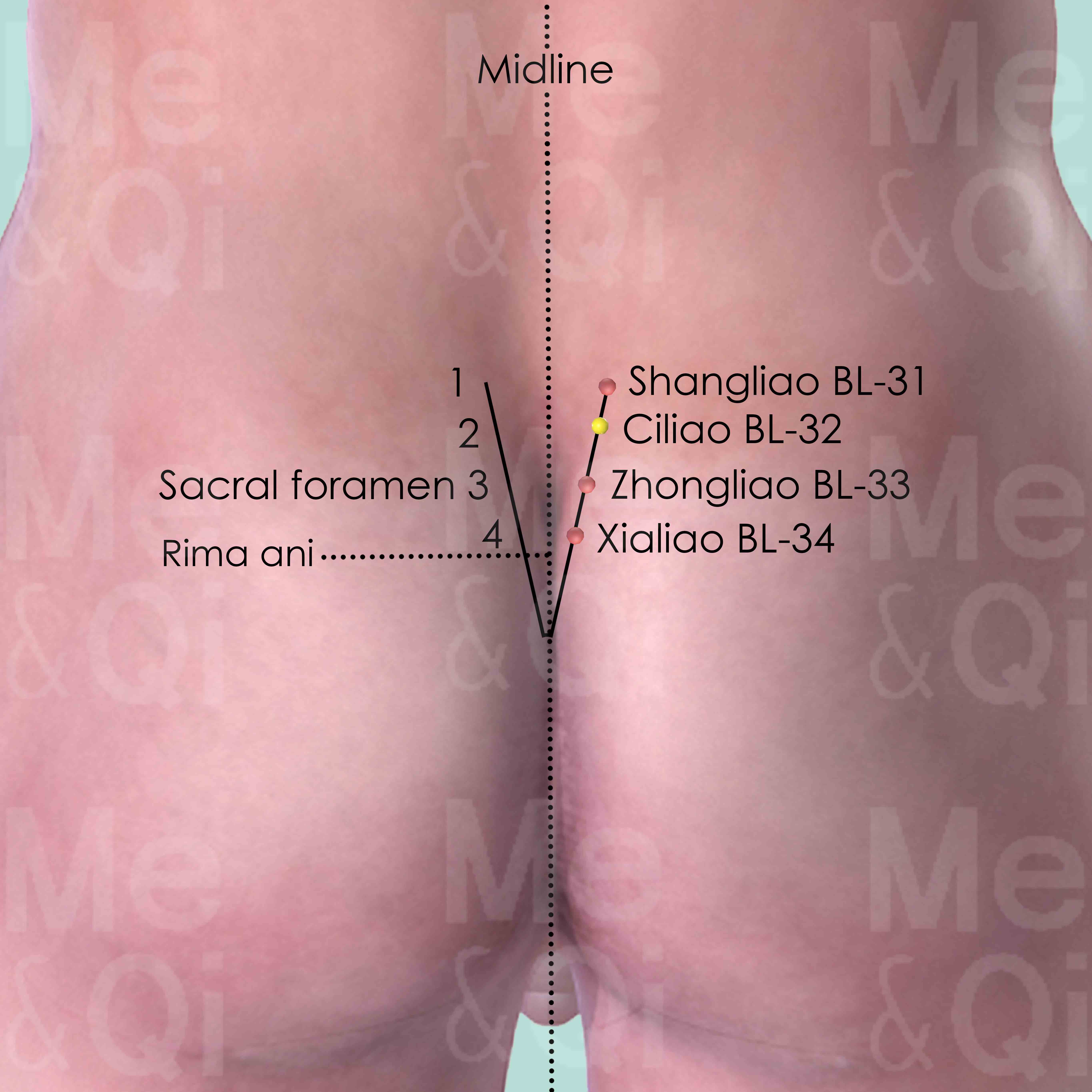
Ciliao BL-32
In the 2nd posterior sacral foramen, about midway between the posterior superior iliac spine (PSIS) and the midline.
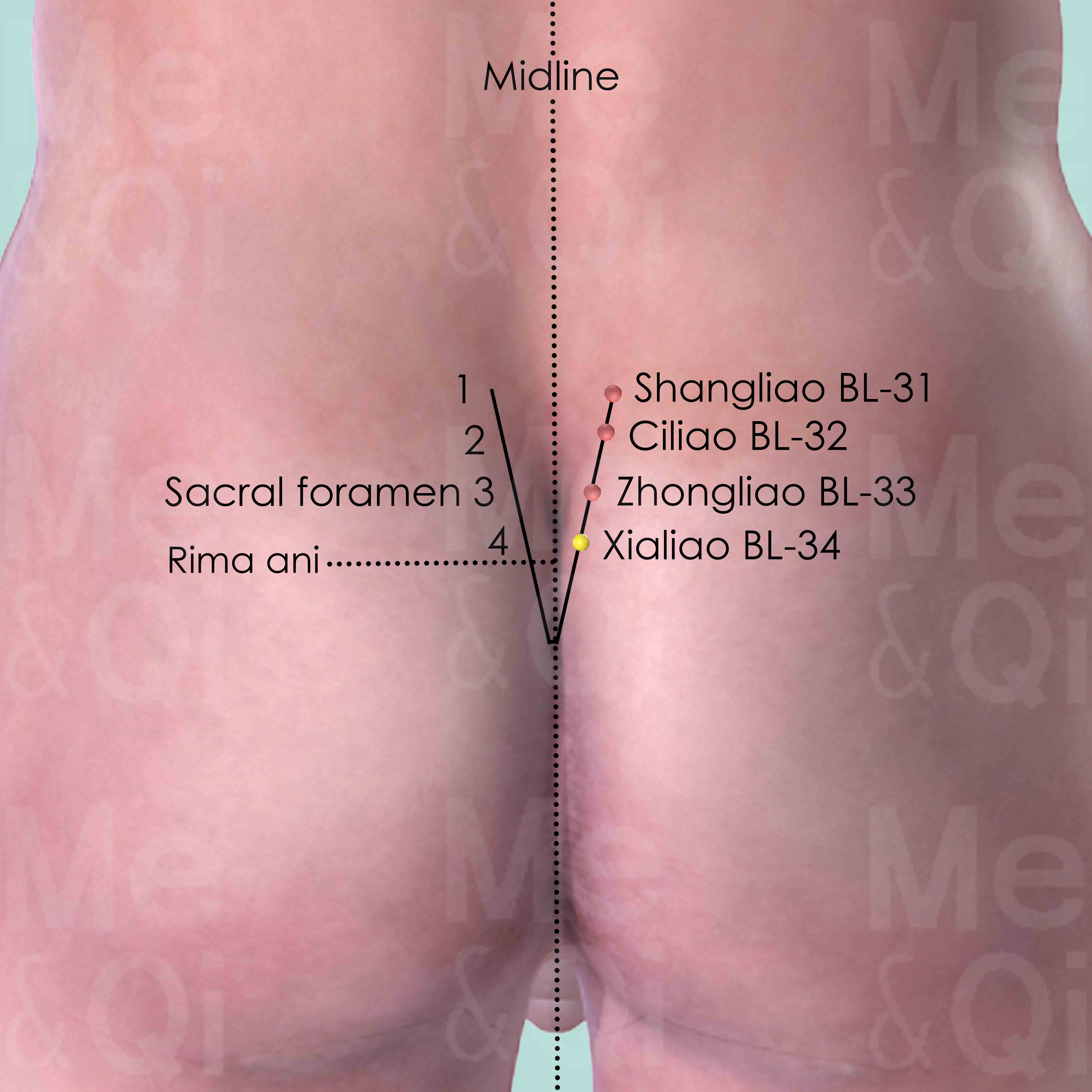
Xialiao BL-34
In the 4th posterior sacral foramen, between the posterior superior iliac spine and the midline.
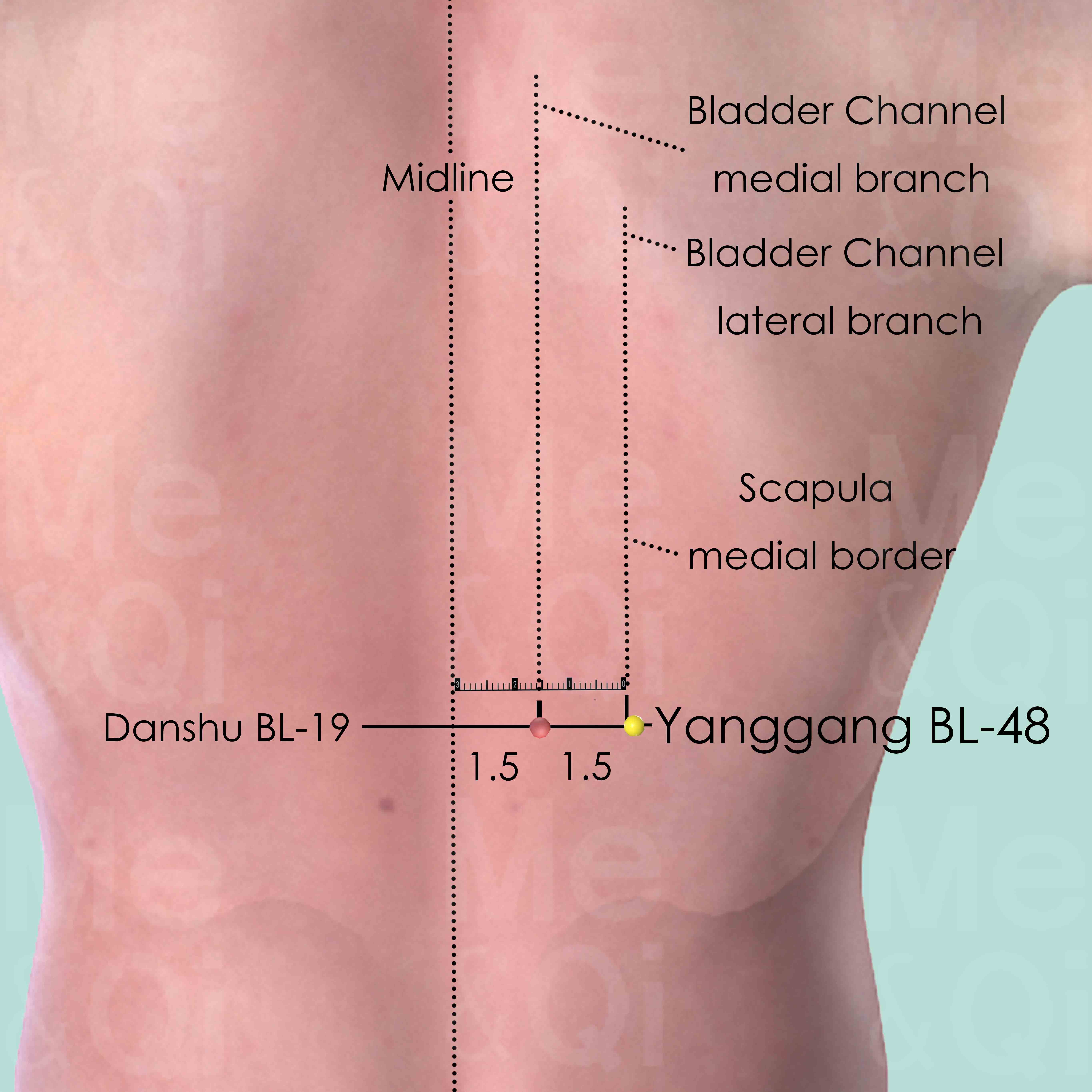
Yanggang BL-48
3 cun lateral to the lower border of the spinous process of the 10th thoracic vertebra (T10).
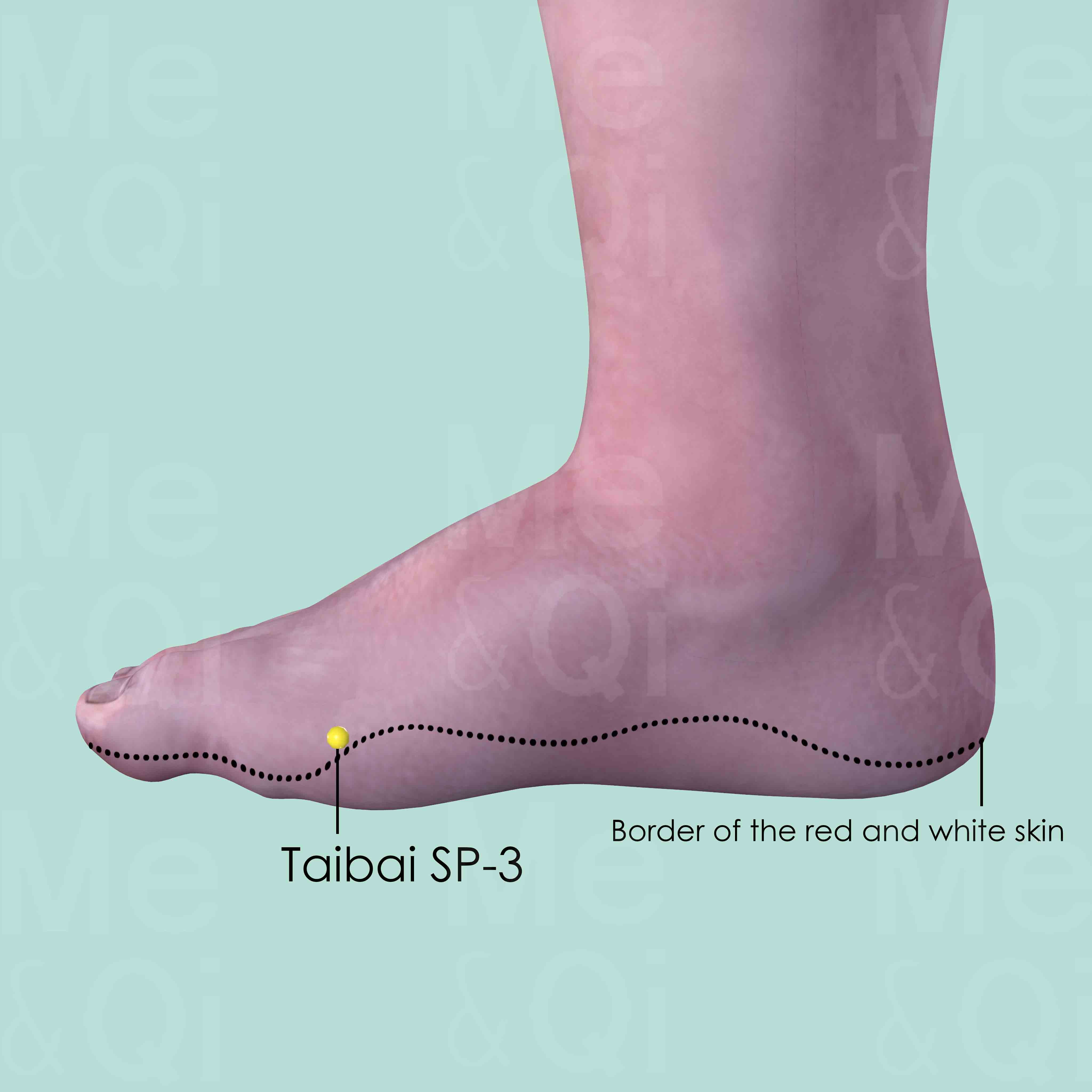
Taibai SP-3
Proximal and inferior to the head of the 1st metatarsal bone, at the border of the red and white skin.
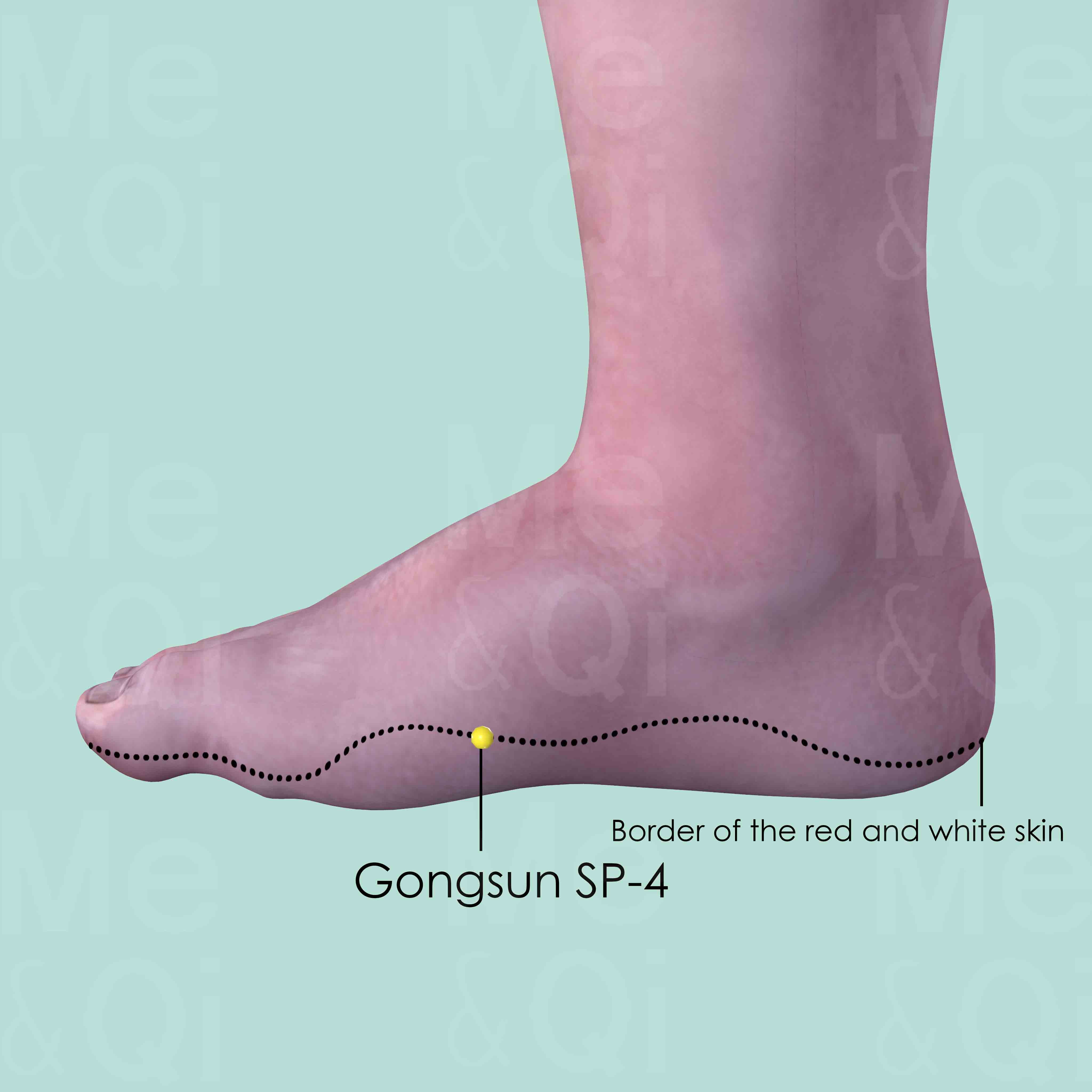
Gongsun SP-4
In the depression distal and inferior to the base of the 1st metatarsal bone, at the border of the red and white skin.
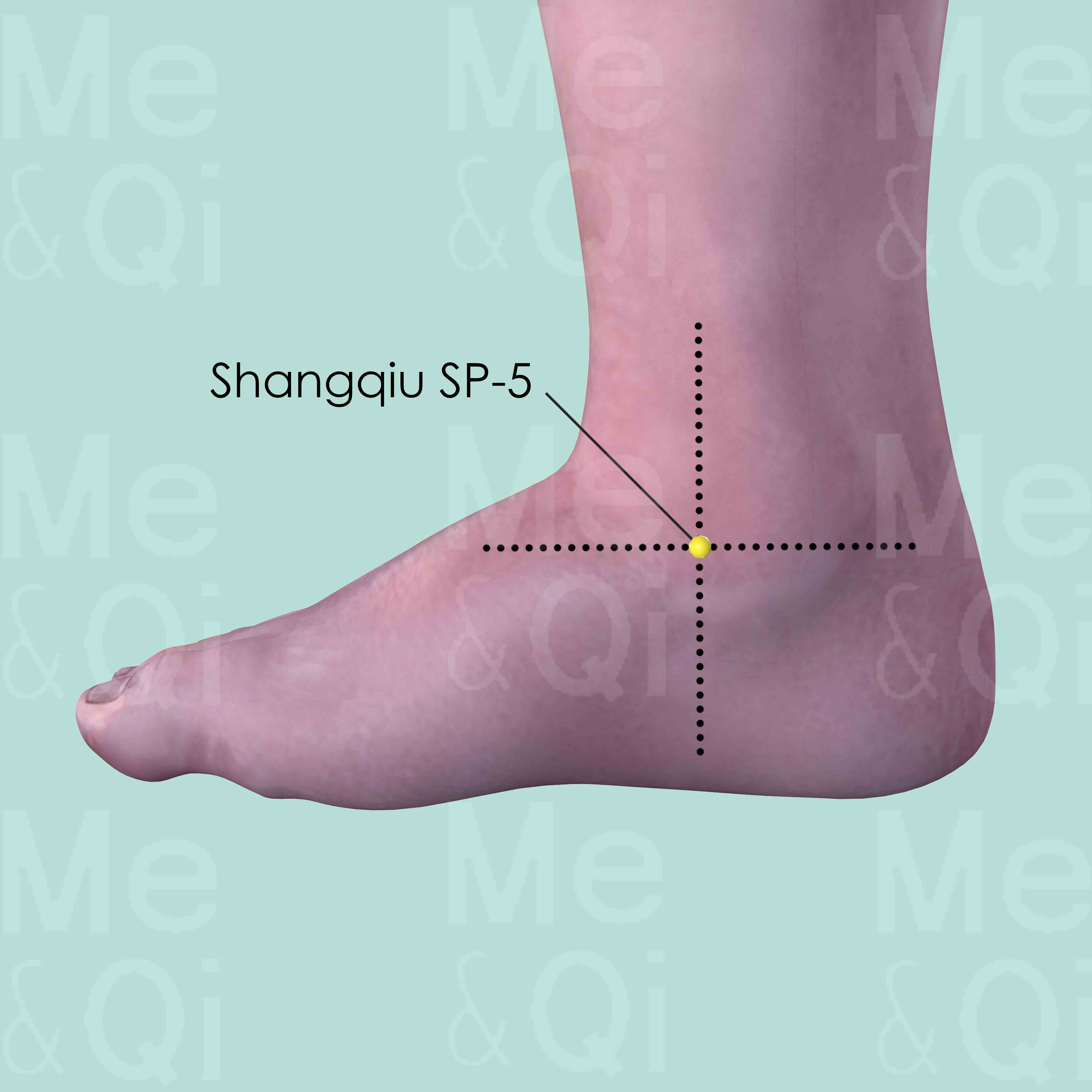
Shangqiu SP-5
In the depression distal and inferior to the medial malleolus, midway between the navicular bone tubercle and the tip of the medial malleolus.
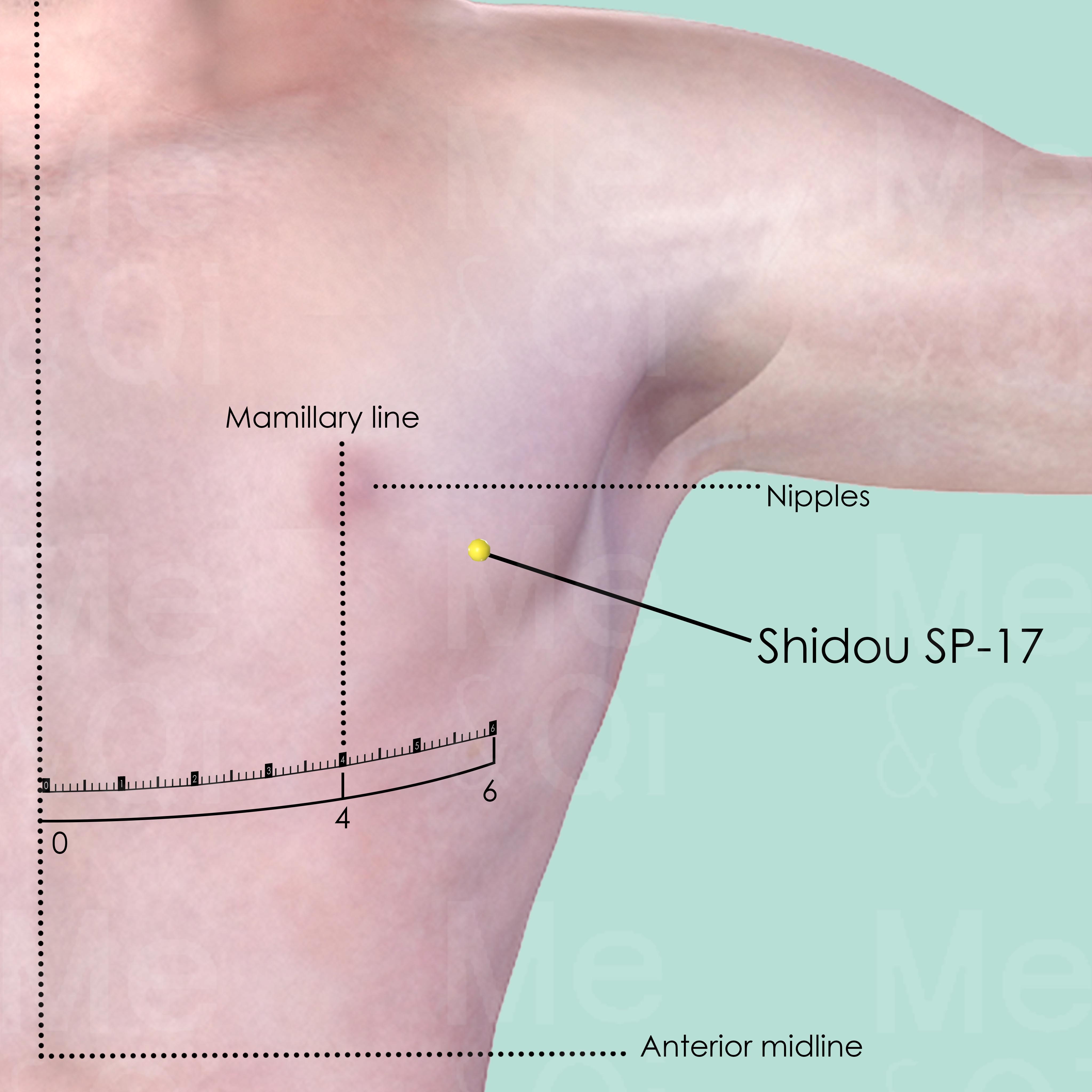
Shidou SP-17
6 cun lateral to the anterior midline, 2 cun lateral to the mamillary line, in the 5th intercostal space.
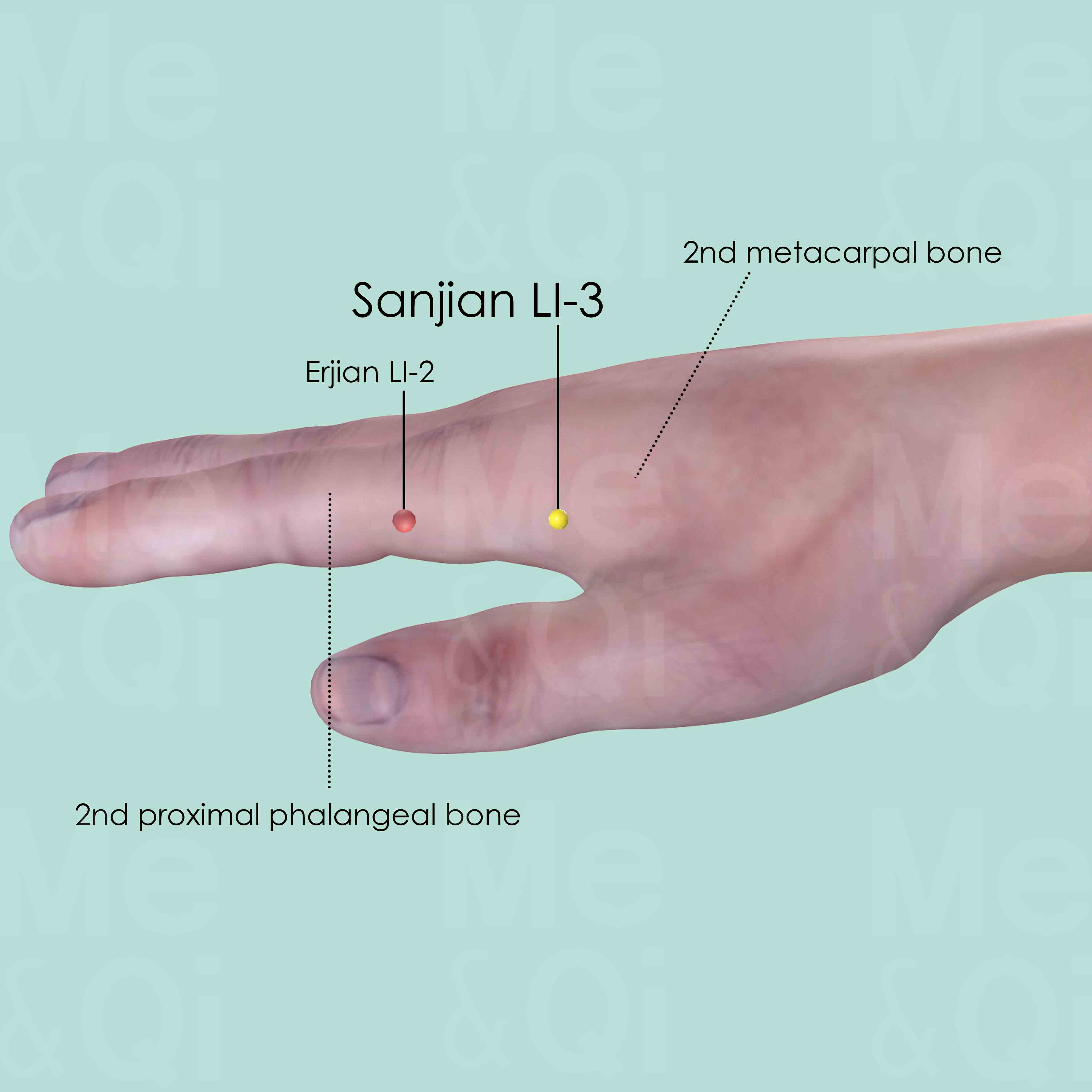
Sanjian LI-3
Located on the radial side of the index finger, in the depression proximal to the head of the 2nd metacarpal bone.
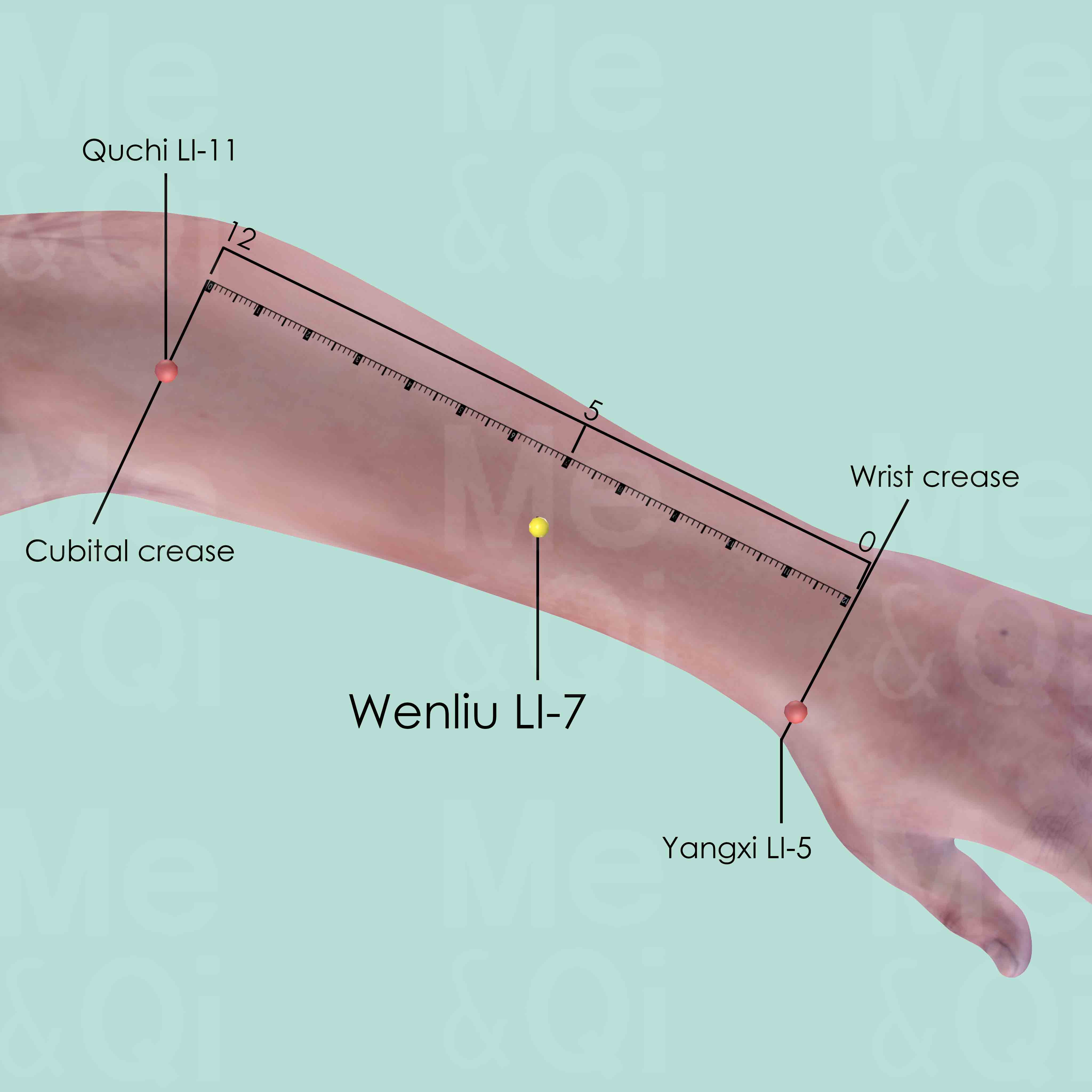
Wenliu LI-7
When a fist is made, with the ulnar side downward and elbow flexed, the point is 5 cun above Yangxi LI-5 at the wrist crease, 1 cun distal to the midpoint of the line joining Yangxi LI-5 and Quchi LI-11.
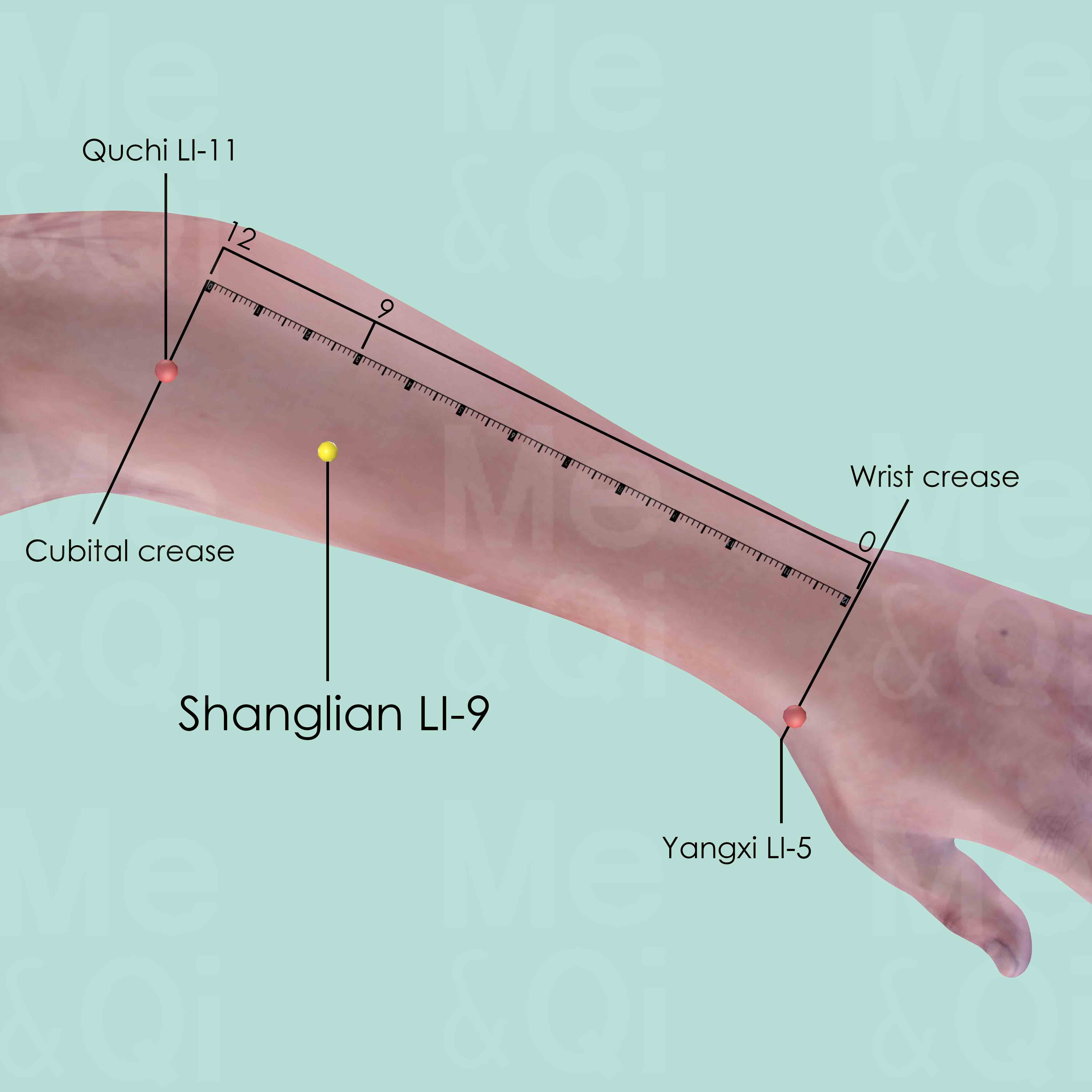
Shanglian LI-9
When a fist is made, with the ulnar side downward and elbow flexed, the point is 3 cun distal to Quchi LI-11 of the line joining Yangxi LI-5 and Quchi LI-11.
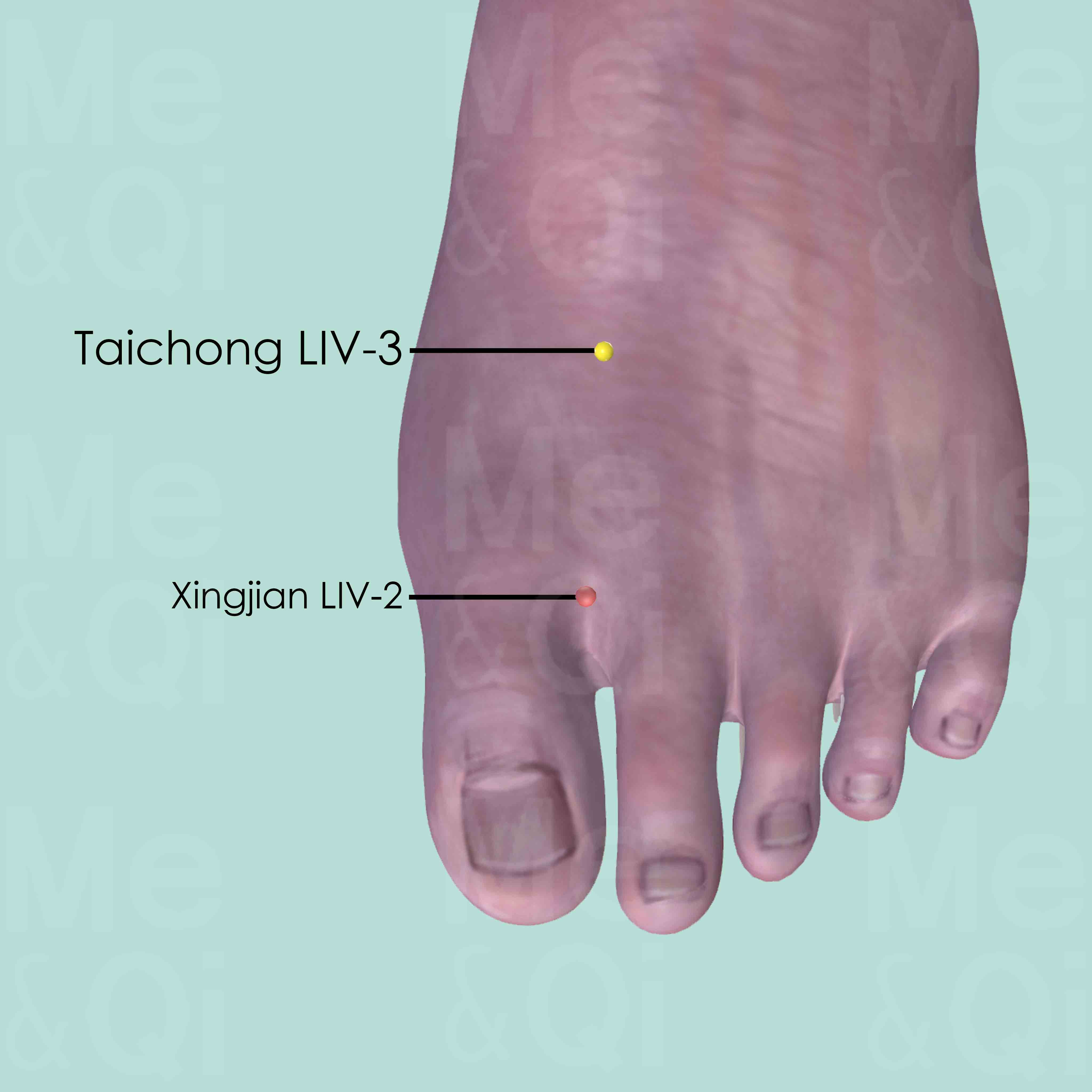
Taichong LIV-3
On the dorsum of the foot, between the 1st and 2nd metatarsal bones, in the depression proximal to the metatarsophalangeal joints and the proximal angle between the two bones.
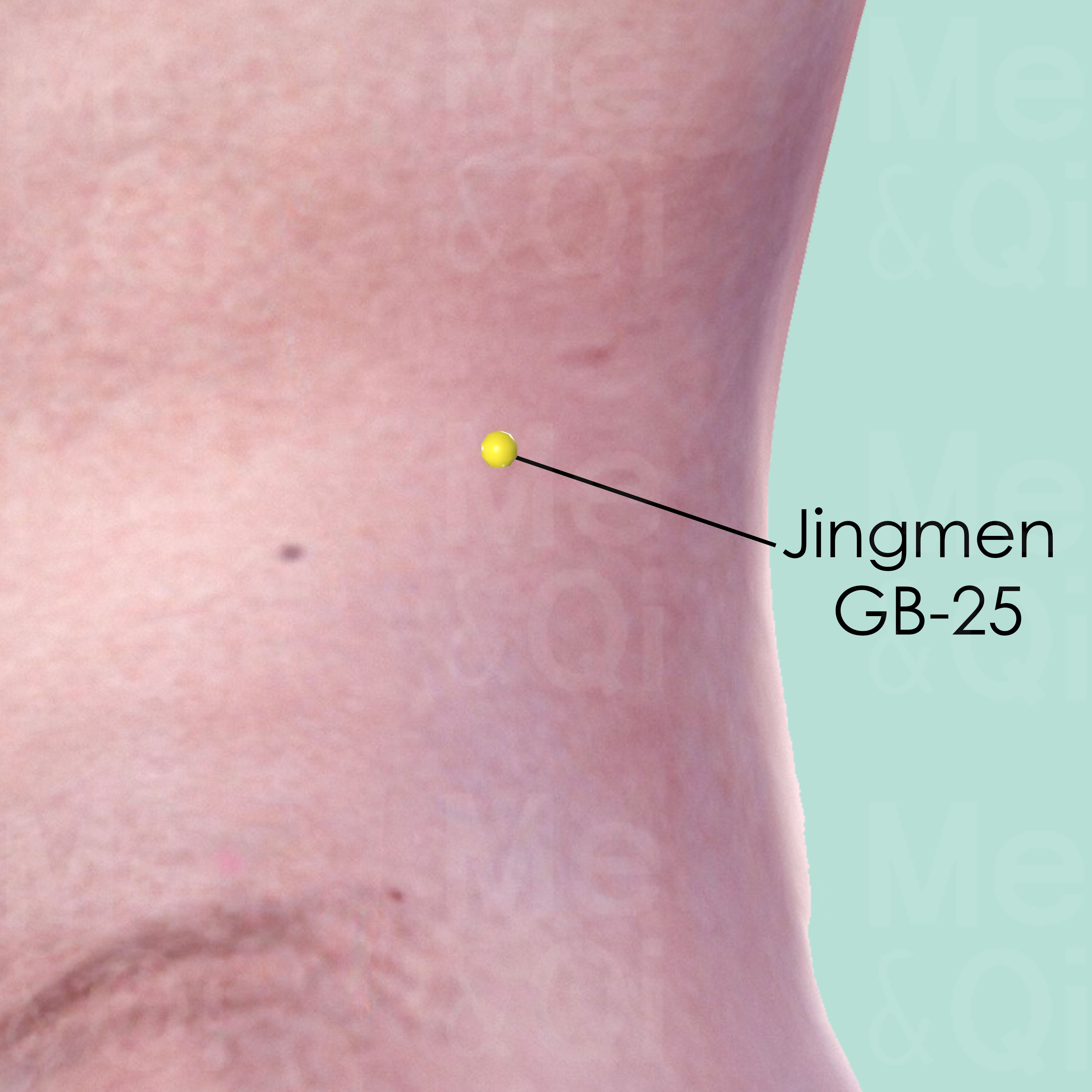
Jingmen GB-25
On the lateral side of the abdomen, on the lower border of the free end of the 12th rib.

